

Portugal Travel Tips
Last Updated: September 1, 2023
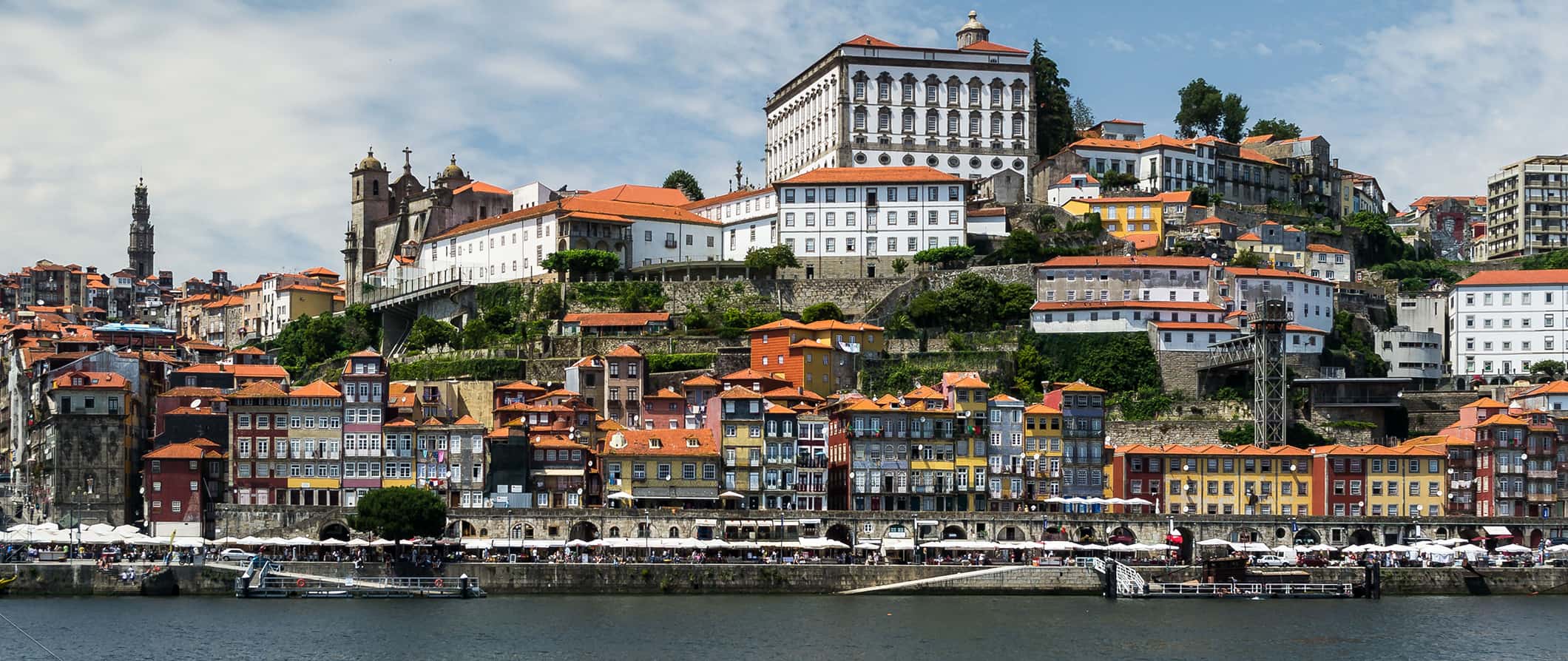
I’ve been to Portugal many times over the years and I never tire of it . It’s one of the most unappreciated countries in Europe and sees a fraction of the tourists that its neighbors do.
Sure, in recent years Lisbon has become a hub for digital nomads, expats, and retirees thanks to its low cost of living. But, in the rest of the country, not much has changed.
Best of all, fewer crowds mean a better, more local experience that won’t break the bank.
This Portugal travel guide can help you plan your trip, save money, and make the most of your time in this stunning and underrated European gem!
Table of Contents
- Things to See and Do
- Typical Costs
- Suggested Budget
- Money-Saving Tips
- Where to Stay
- How to Get Around
- How to Stay Safe
- Best Places to Book Your Trip
- Related Blogs on Portugal
Click Here for City Guides
Top 5 things to see and do in portugal.
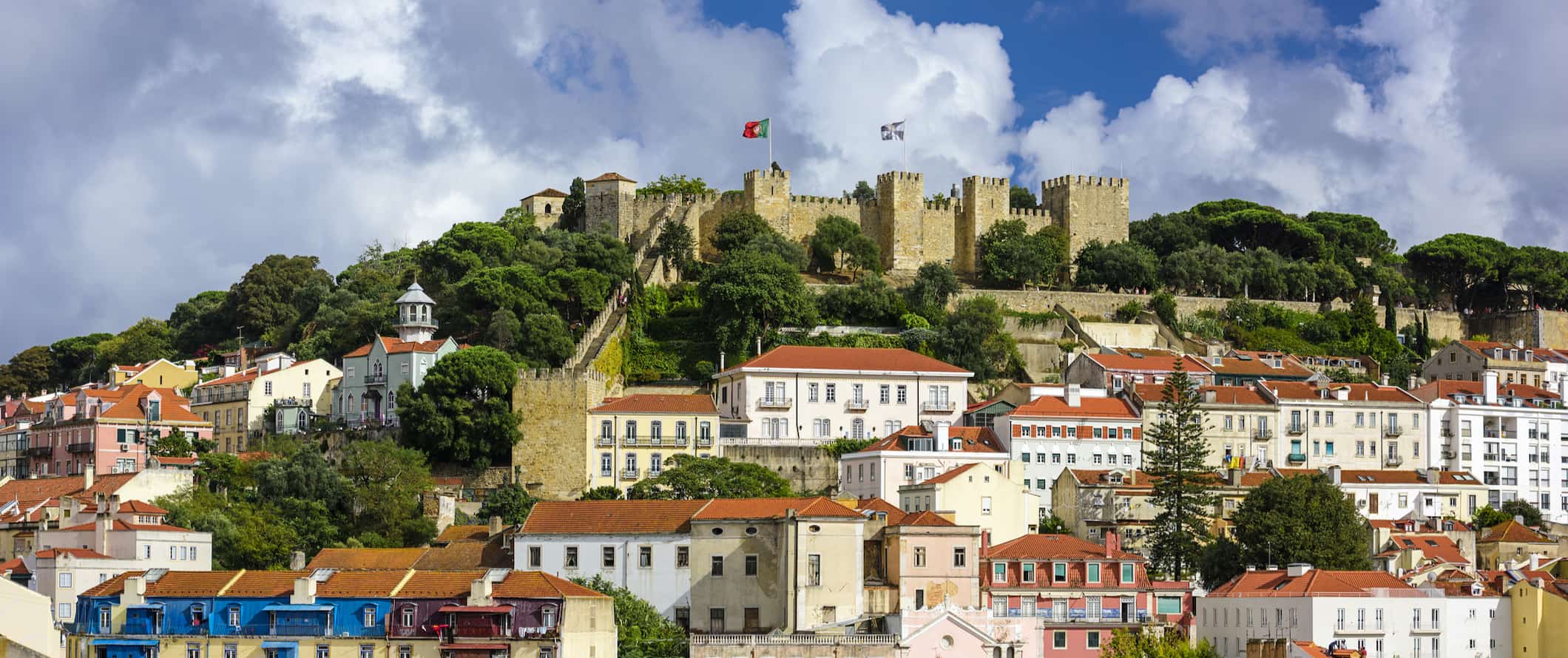
1. Admire Lisbon
Lisbon is gorgeous. I instantly fell in love with it. It has mystique, history, and great food. Take a trip to the Castle of St. George, see the 16th-century UNESCO Belem Tower, admire the churches (specifically the Sé de Lisboa Cathedral), listen to some traditional Fado music, and enjoy the delicious cuisine. It’s one of the most affordable and underrated capitals in Europe!
2. Visit Batalha Monastery
Batalha is a town located just 90 minutes by car from Lisbon. The town is home to Batalha Monastery, officially known as the Monastery of Saint Mary of the Victory. Built in 1388, it’s one of Europe’s greatest Gothic masterpieces and makes for a popular day trip from Lisbon. The monastery took 131 years to build and is now a UNESCO World Heritage Site. Walking through the gigantic gothic doorway and seeing the towering interior (which is lined with 16th-century stained-glass windows) is absolutely breathtaking. Admission is 6 EUR, but you can also purchase a combo ticket to see The Convent of Christ in Tomar and The Abbey of Santa Maria for 15 EUR.
3. Explore the Azores
These 9 islands lie 1,500 kilometers (930 miles) from Lisbon in the Atlantic Ocean. Each of the islands offers a slow-paced way of life, unique wildlife, and stunning beaches. These islands are very off the beaten track and a good “out of the way” place to go. São Miguel is great for hiking and road trips, Pico has great wine, and São Jorge has incredible nature, but you can’t go wrong with any of the islands here!
4. Party in Lagos
Lagos is the place people go to party in Portugal. It’s an excellent destination to soak up the sun. During the summer, this is one of Europe’s premier party destinations for young travelers. there are also incredible beaches, great surfing, and lots of historic churches here. The city is also home to Europe’s first slave market, a sobering sight that dates back to 1444.
5. Enjoy Porto
Porto is one of Portugal’s most colorful cities. Spend some time getting lost and meandering the narrow alleyways and steep staircases that lead to the scenic Douro River. Hop on a river cruise, visit the iconic Lello & Irmão bookstore, tour the museums, and visit the surrounding Duoro Valley and its many vineyards (this is the region where port wine comes from, hence the name). It’s also one of the main launching points for the famous Camino Portugues hike that leads to Santiago de Compostella in Spain (which takes 10-14 days, though you can definitely just do a day hike or a smaller section of the trail).
Other Things to See and Do in Portugal
1. journey to evora.
One of Portugal’s many UNESCO World Heritage Sites, Evora is a small town that offers an array of beautiful and historic buildings. Located 90 minutes east of Lisbon, Evora’s most famous landmark is the Temple of Diana, a Roman temple and UNESCO site from the 1st century. But there is also the Praça do Giraldo, the town’s main square, which is a charming spot to people-watch and embrace the local pace of life. This is small-town Portugal at its best.
2. See the Religious Monuments in Braga
Located one hour north of Porto, the beautiful city of Braga boasts numerous Baroque monuments, including one of the country’s best-known sights: the Bom Jesus Sanctuary (a Catholic shrine and pilgrimage site). The old and the new city are connected by the main square, Praça da Republica, which is a great place for a stroll. The city’s cathedral is also very much worth a visit, as it is the country’s oldest (construction started in 1509).
3. See the Abbey of Santa Maria
Located between Lisbon and Porto, the Abbey of Santa Maria is Europe’s largest Cistercian building (the Cistercians are a Catholic order of monks and nuns, founded in 1098). You can wander around the abbey at your leisure to learn more about its cloisters, dormitories, library, and more. The church is free to enter but the monastery costs 6 EUR. You can save money by purchasing a combo ticket to the Convent of Christ in Tomar and the Batalha Monastery for 15 EUR.
4. Head to Sintra
Lord Byron, an English poet writing in the 18th century, said that Sintra was “perhaps in every respect the most delightful [place] in Europe.” If you are visiting Lisbon, you should definitely make an effort to come here to see its palaces, wonderful views, and museum collections. It’s one of the most beautiful places in the entire country. The train takes about an hour from Lisbon and costs under 5 EUR.
5. Learn about the Knights Templar in Tomar
The big attraction in the town of Tomar is the Templar Castle and Convent of Christ. It was the headquarters for the Knights Templar in the 12th century (they were a Catholic military order founded in 1118 that fought in the Crusades). The castle, a UNESCO World Heritage Site, was an important defensive stronghold against the encroaching Moors (Muslims from North Africa who eventually conquered parts of Spain and Portugal). Admission is 6 EUR or 15 EUR with a combo ticket.
6. Hit the water
Aveiro, located 72 kilometers (45 miles) south of Porto, lies on what’s known as the Silver Coast. This small university town has a historic center built on canals, giving rise to its nickname “the Venice of Portugal.” The winds here create good opportunities for windsurfing and surfing too. You can rent surfboards for as little as 15 EUR per day, while kitesurfing and windsurfing rentals around 50 EUR. If you want lessons, most two-day courses cost around 130 EUR.
7. Get lost in Coimbra
Another university city, Coimbra is located between Lisbon and Portugal and is home to one of the world’s oldest universities (the university was founded in 1290 and moved to Coimbra in 1537). There is a famous and beautiful old library that you can tour, but the real thing to do in Coimbra is just wander through its many historic streets. There are plenty of churches and gardens to take in as you stroll around soaking up the history. It’s a postcard-perfect destination.
8. Attend a Fado performance
Fado is a local type of music that originated in Lisbon. It’s a rather haunting, mournful style often focused on the hardships of the poor or life at sea. The music first appeared in the 19th century and was popular with the working class (especially sailors). The word “fado” likely stems from the Latin word for fate, which is why many of the songs focus on the inevitability of misfortune and suffering. While melancholic, the music is also beautiful and poetic.
9. Check out Faro
Faro is a common starting point for tours of the Algarve region, a southern region brimming with great beaches, tasty seafood, and plenty of tourists. Faro itself isn’t a beach city, but has a lovely old town and is a great place to spend a day before you explore the coast. Don’t miss the cathedral and the municipal museum to learn more about the city.
10. Stand at the edge of Europe
Cape Sagres is the most southwestern point on the European continent. It was here that Henry the Navigator, one of Portugal’s most revered figures during its empire, had his famous navigation school. He was one of the central figures to kick start the Age of Discovery in the 15th century that put Portugal on the map (literally). His development of lighter caravel ships allowed explorations in West Africa, which also launched the slave trade.
11. Try a Pastéis de nata
This pastry is a Portuguese staple. You’ll find these delicious custard-filled tarts at every bakery. They’re a must for an authentic food experience and cost around 1 EUR.
12. Walk the Templar Stairs
Located in Sintra, Quinta da Regaleira is a UNESCO World Heritage Site composed of several historic buildings, including a huge palace and chapel. But the highlight is the Initiation Wells, two massive wells that stretch far underground. They were built by the Templars for their initiation rituals. Would-be knights would have to travel down a winding staircase into the massive wells blindfolded and navigate a labyrinth before coming back to the light. Today, you can tour the wells and explore them yourself. Admission is 10 EUR.
The Camino Portugues (The Portuguese Way) is a pilgrimage trail that stretches from Lisbon to Santiago de Compostela in Spain. It’s the second most popular Camino, after the main French Way, though it sees a fraction of pilgrims compared to the main route. Most hikers start in Porto, with the 280 kilometers (173 miles) journey taking around 10-14 days, though it’s also possible to start in Lisbon for a longer trek.
For more information on other destinations in Portugal, check out these guides:
- Lagos Travel Guide
- Lisbon Travel Guide
- Porto Travel Guide
Portugal Travel Costs
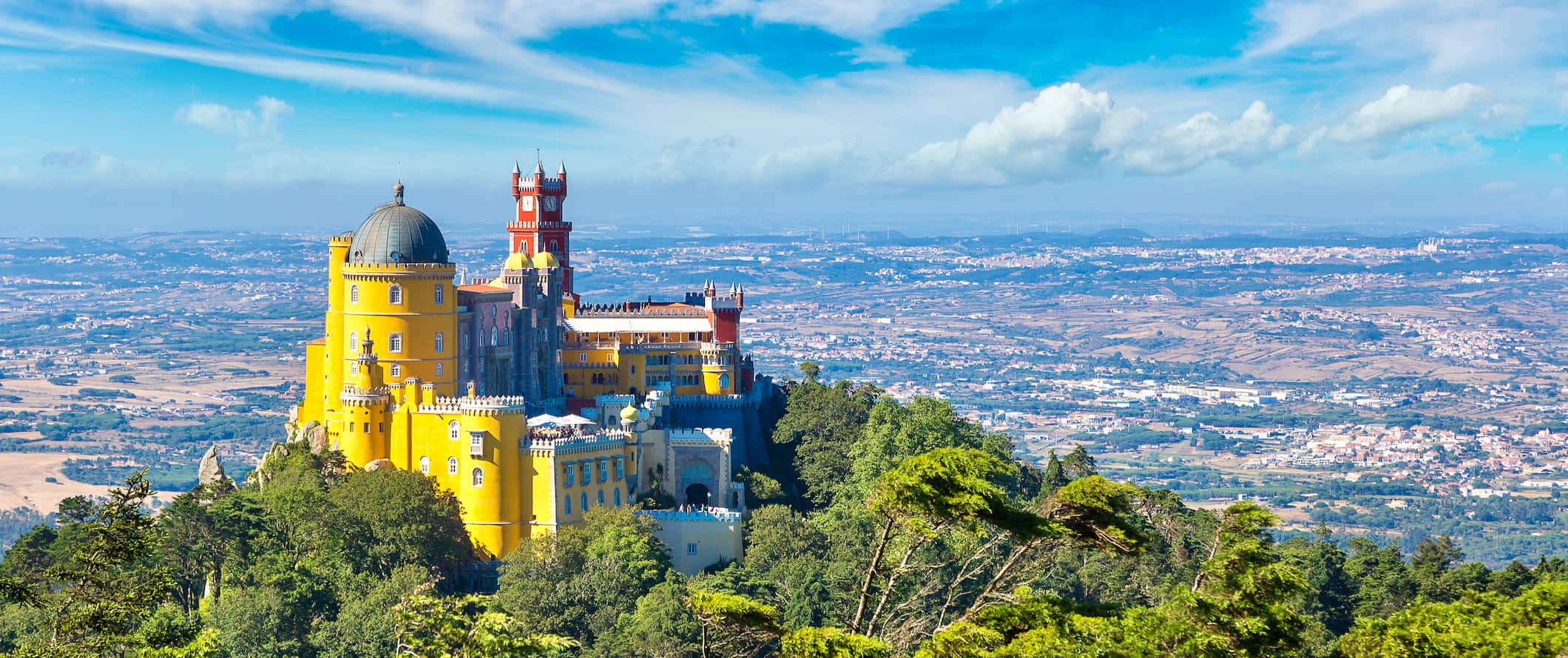
For those traveling with a tent, camping is available around the country for 10-20 EUR per night for a basic tent plot without electricity.
A room in a two-star budget hotel costs between 40-75 EUR per night. Expect basic amenities like free Wi-Fi and TV. Free breakfast is sometimes included as well.
On Airbnb, private rooms start at 30-50 EUR per night while entire homes/apartments average around 100 EUR.
Food – Fish and seafood form the backbone of Portuguese cuisine (Portugal eats the most seafood per capita in Europe). Cod, sardinhas assadas (grilled sardines), sea bass, and shellfish are some of the most common staples. Other popular dishes include cozido à portuguesa (boiled stew), peixinhos da horta (breaded and fried vegetables), and cured ham. Be sure to also try the prego (beef sandwich) or the bifana (pork sandwich). You can find them at local cafes for just 5 EUR.
You can find snacks in bakeries for 2 EUR or less, light meals and sandwiches for around 8-10 EUR, and fast food for around the same price.
If you want a three-course meal with drinks, you’re looking at spending closer to 20 EUR. After that, the sky is the limit!
For a casual restaurant meal, expect to pay around 10 EUR.
Beer is around 3 EUR while a latte/cappuccino costs around 2.50 EUR. Bottled water is less than 1 EUR.
If you’re cooking, groceries cost around 35-45 EUR for a week’s worth of food. This includes staples like pasta, rice, produce, and some meat or seafood.
Backpacking Portugal Suggested Budgets
On a backpacker budget, you can visit Lisbon for around 45 EUR per day. On this budget, you’ll be staying in a hostel dorm room, cooking all of your meals, limiting your drinking, using public transportation to get around, and sticking to free activities like free walking tours, enjoying the beaches, and exploring the Old Town. If you plan on drinking, add 5-15 EUR per day to your budget.
On a mid-range budget of 125 EUR per day, you can stay in a private Airbnb or private hostel room, eat at cheap local restaurants and cook some meals, use public transportation and take the occasional taxi, visit paid attractions like the botanic gardens and Belem Tower, and enjoy some drinks at the bar.
On a “luxury” budget of 235 EUR or more a day, you can stay in a hotel, eat out for every meal, drink what you want, rent a car to explore the region, and visit as many museums and attractions as you’d like. This is just the ground floor for luxury though — you can easily spend more if you really want to splash out!
You can use the chart below to get an idea of how much you need to budget daily. Keep in mind these are daily averages – some days you spend more, some days you spend less (you might spend less every day). We just want to give you a general idea of how to make your budget. Prices are in EUR.
Portugal Travel Guide: Money-Saving Tips
For the most part, Portugal is an incredibly affordable destination. Food, accommodation, wine – it’s all very cheap (especially when compared to other EU countries). As long as you’re not splurging on a ton of booze or eating at the overpriced tourist restaurants, you’ll find it easy to save big while still enjoying yourself. Here are a few more ways to save money in Portugal:
- Look for free museum visits – Some museums are free on Sundays. Check with the local tourism board or the museum’s website for more information on free/discounted hours.
- Skip the taxis – Taxis add up so if you’re on a budget, skip the taxis and use the metro or bus system to go where you need to.
- Say “no” to bread – When eating out, a selection of bread and olives may be brought to your table before your meal. These aren’t free, so just say no if you’re on a budget.
- Stay at a pensão – These family-run inns offer decent lodgings for very little money and are a great alternative to hotels.
- Get a tourist card – Certain cities, like Porto and Lisbon, offer tourist cards that provide unlimited access to public transportation (normally for one, two, or three days) and free or discounted access to museums and monuments. If you plan to see lots of sites, be sure to go to the local tourism office and pick up one of these cards!
- Stay with a local – If you plan ahead, you can usually find Couchsurfing hosts all throughout the country. This way, you not only have a free place to stay but you can connect with a local who can share their insider tips and advice. Just send your requests early in the summer.
- Cook your meals – Restaurants here are cheap, but eating out all the time adds up. Visit the local market to stock up on groceries and cook a few meals. You’ll save a ton!
- Bring a water bottle – The tap water here is safe to drink so bring a reusable water bottle to save money and reduce your plastic use. LifeStraw is my go-to brand as their bottles have built-in filters to ensure your water is always clean and safe.
Where to Stay in Portugal
Budget accommodation is plentiful in Portugal. Here are my suggested places to stay:
- Lookout! Lisbon Hostel (Lisbon)
- Lisboa Central Hostel (Lisbon)
- Yes! Lisbon Hostel (Lisbon)
- Rising Cock Party Hostel (Lagos)
- Gold Coast Calm Hostel (Lagos)
- Casa D’Alagao (Faro)
- HI Hostel Faro (Faro)
- Rivoli Cinema Hostel (Porto)
- Gallery Hostel (Porto)
- Pilot Design Hostel & Bar (Porto)
How to Get Around Portugal
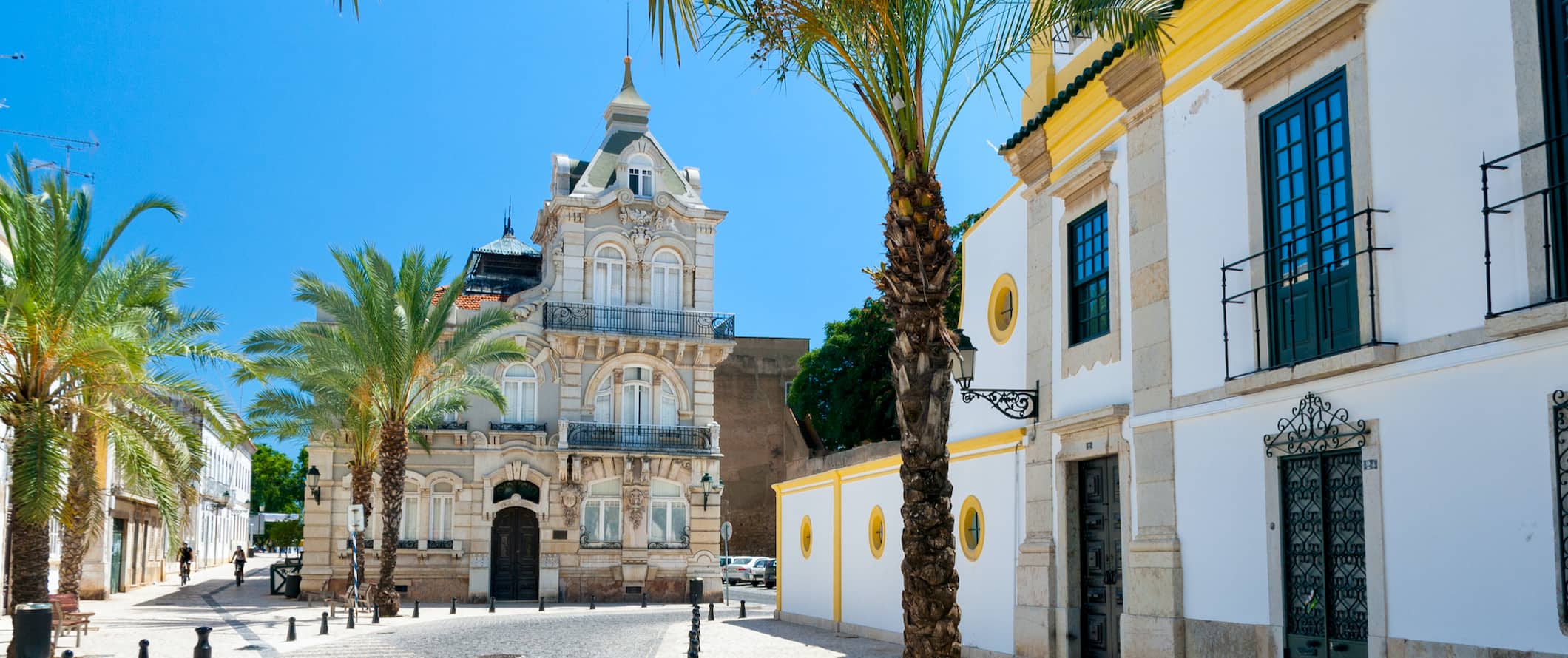
Train – Portugal has a great rail system. Tickets are affordable, with a ride from Porto to Lisbon costing around 25 EUR. Even the high-speed rail is affordable (unlike in many other European countries); it’s about the same price between Porto and Lisbon as the regular train. A train trip between Braga (in the far north) to Faro (at the southern tip) costs between 65-75 EUR.
Bus – Buses are the cheapest way to explore, and they’re also not super time-consuming since Portugal isn’t a huge country. A cross-country bus from Lisbon to Lagos costs between 15-20 EUR, while an eight-hour journey from Braga to Faro costs around 30 EUR.
Lisbon is the main hub for budget-friendly Flixbus routes around the country. It’s the cheapest way to get from Portugal and into the rest of Europe. A bus to Madrid, Spain costs around 30 EUR.
Flying – Flying is the best way to get to the Azores, though it’s likely not worth it for getting around the mainland. A flight from Lisbon to the Azores costs as little as 50 EUR, while Lisbon to Madeira starts at about 40 EUR. TAP Air is Portugal’s official airline.
Taxis – Taxis start at 3.50 EUR and go up by about .80 EUR per kilometer. Skip them if you can as they add up fast!
Ridesharing – Uber is available in Portugal’s larger cities but it’s not much cheaper than taxis. I’d still skip ridesharing altogether if you’re on a budget.
Bike rental – Locals like to get around by bike and bike rentals are available in all the major cities. You can rent a basic city bike for around 10-15 EUR per day.
Car rental – Car rentals cost as little as 25 EUR per day for a multi-day rental. It’s a super affordable way to explore if you have someone to split the cost with (especially in the Azores). Drivers need to be at least 18. For the best rental car deals, use Discover Cars
When to Go to Portugal
Peak season in Portugal is during the summer months of June-August. Temperatures hover around 23°C (74°F) and popular destinations like Porto and Lisbon experience an influx of visitors. Prices increase during this time as well. But the overall atmosphere and weather are great, so it’s still worth visiting during peak season.
Personally, I think the best time to visit Portugal is the shoulder season in the spring and fall (April-May and September-October). Temperatures range from 18-22°C (65-71°F) so it’s still warm enough to explore and enjoy the outdoors. There aren’t as many crowds and prices are cheaper, making it an ideal time for budget travelers.
Winter is from November to February. It gets cold and tourist crowds thin out considerably. Temperatures vary quite a bit from place to place, but overall, the temperature averages around 12°C (53°F). I’d avoid visiting in the winter if you can, however, if you’re on the continent already Portugal is one of the warmer places to spend the winter.
How to Stay Safe in Portugal
Portugal is very safe for backpacking and solo travel as violent attacks are uncommon. Pickpocketing is the most common crime and can occur in touristy areas and on public transportation. Be aware of your surroundings when you’re in markets, on busy streets, and when using the metro. Always keep your valuables secure and out of sight just to be safe.
Drugs here have been decriminalized, but it’s best to avoid them as selling drugs is still illegal. If approached and offered drugs, politely decline and continue on your way
You won’t find a lot of travel scams in the country but read this article on common travel scams to avoid just to be safe.
Solo female travelers should generally feel safe here, however, the standard precautions apply (never leave your drink unattended at the bar, don’t walk home alone at night if intoxicated, etc.).
If you experience an emergency, dial 112 for assistance.
Remember: always trust your gut instinct. If a taxi driver seems shady, stop the cab and get out. If your hotel is seedier than you thought, get out of there. You have every right to remove yourself from the situation. Make copies of your personal documents, including your passport and ID. Forward your itinerary along to loved ones so they’ll know where you are.
The most important piece of advice I can offer is to purchase good travel insurance. Travel insurance will protect you against illness, injury, theft, and cancellations. It’s comprehensive protection in case anything goes wrong. I never go on a trip without it as I’ve had to use it many times in the past. You can use the widget below to find the policy right for you:
Portugal Travel Guide: The Best Booking Resources
These are my favorite companies to use when I travel. They consistently have the best deals, offer world-class customer service and great value, and overall, are better than their competitors. They are the companies I use the most and are always the starting point in my search for travel deals.
- Skyscanner – Skyscanner is my favorite flight search engine. They search small websites and budget airlines that larger search sites tend to miss. They are hands down the number one place to start.
- Hostelworld – This is the best hostel accommodation site out there with the largest inventory, best search interface, and widest availability.
- Booking.com – The best all around booking site that constantly provides the cheapest and lowest rates. They have the widest selection of budget accommodation. In all my tests, they’ve always had the cheapest rates out of all the booking websites.
- HostelPass – This new card gives you up to 20% off hostels throughout Europe. It’s a great way to save money. They’re constantly adding new hostels too. I’ve always wanted something like this and glad it finallt exists.
- Get Your Guide – Get Your Guide is a huge online marketplace for tours and excursions. They have tons of tour options available in cities all around the world, including everything from cooking classes, walking tours, street art lessons, and more!
- The Man in Seat 61 – This website is the ultimate guide to train travel anywhere in the world. They have the most comprehensive information on routes, times, prices, and train conditions. If you are planning a long train journey or some epic train trip, consult this site.
- Rome2Rio – This website allows you to see how to get from point A to point B the best and cheapest way possible. It will give you all the bus, train, plane, or boat routes that can get you there as well as how much they cost.
- FlixBus – Flixbus has routes between 20 European countries with prices starting as low 5 EUR! Their buses include WiFi, electrical outlets, a free checked bag.
- SafetyWing – Safety Wing offers convenient and affordable plans tailored to digital nomads and long-term travelers. They have cheap monthly plans, great customer service, and an easy-to-use claims process that makes it perfect for those on the road.
- LifeStraw – My go-to company for reusable water bottles with built-in filters so you can ensure your drinking water is always clean and safe.
- Unbound Merino – They make lightweight, durable, easy-to-clean travel clothing.
- Top Travel Credit Cards – Points are the best way to cut down travel expenses. Here’s my favorite point earning credit cards so you can get free travel!
- BlaBlaCar – BlaBlaCar is a ridesharing website that lets you share rides with vetted local drivers by pitching in for gas. You simply request a seat, they approve, and off you go! It’s a cheaper and more interesting way to travel than by bus or train!
Portugal Travel Guide: Related Articles
Want more info? Check out all the articles I’ve written on Portugal travel and continue planning your trip:
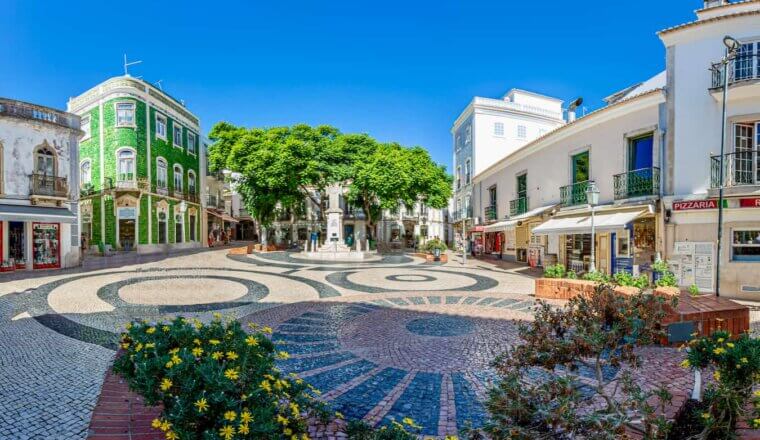
The 4 Best Hostels in Lagos, Portugal
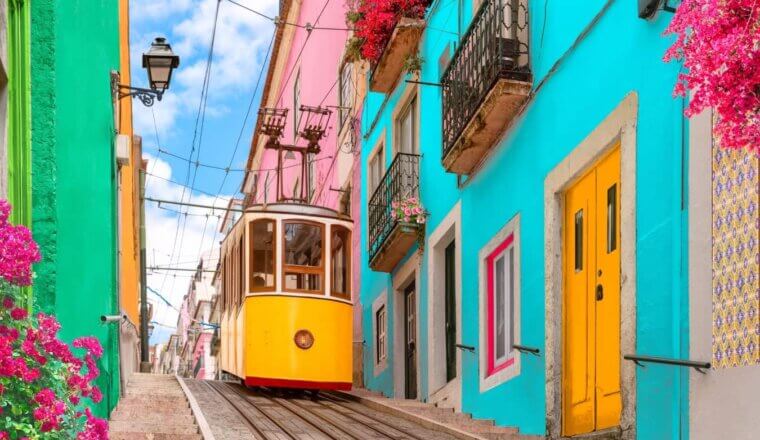
The Best Walking Tours in Lisbon
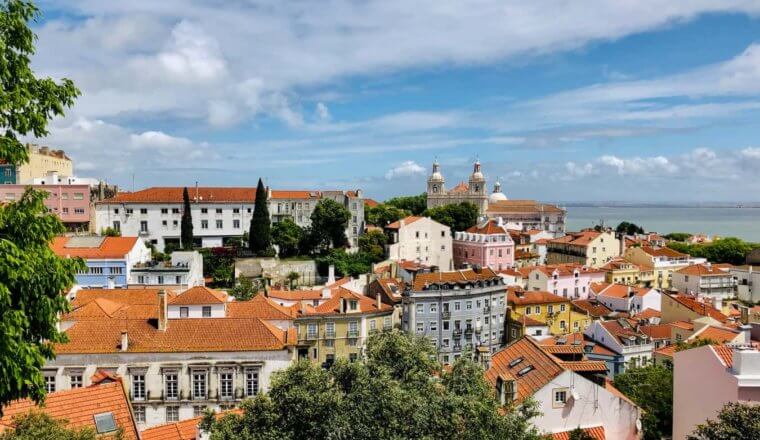
Where to Stay in Lisbon: The Best Neighborhoods for Your Visit
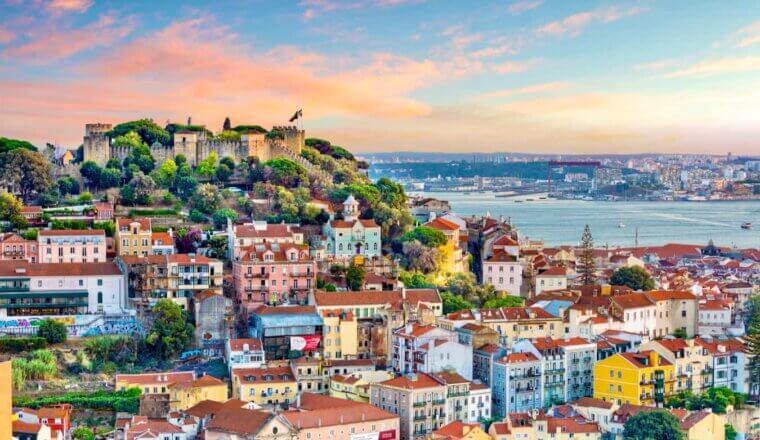
The 9 Best Hostels in Lisbon
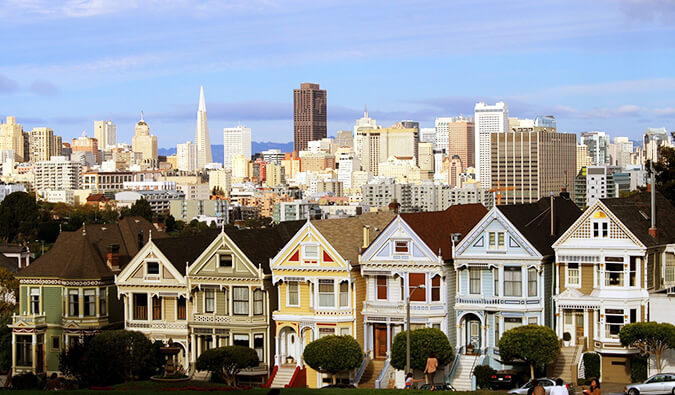
When Three Days Is Not Enough Time
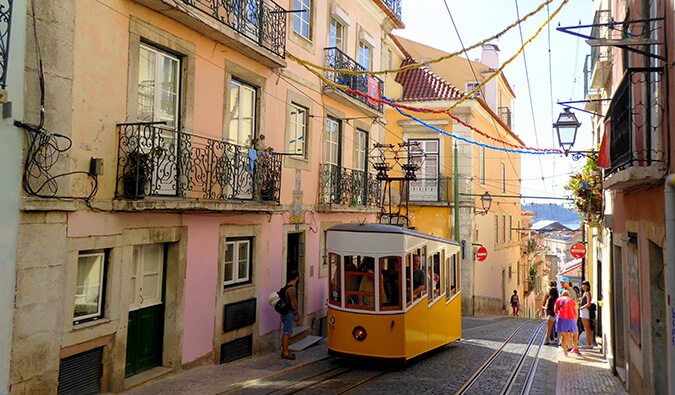
Lisbon: Even Better the Second Time
Get your free travel starter kit.
Enter your email and get planning cheatsheets including a step by step checklist, packing list, tips cheat sheet, and more so you can plan like a pro!

- Where To Stay
- Transportation
- Booking Resources
- Related Blogs

Portugal Travel Guide

Planning a trip to Portugal and not sure where to go and how to plan your trip? On this page, you will find travel inspiration and insider tips for visiting a wide variety of destinations all over Portugal.
From cities to the most beautiful beaches, itinerary suggestions, and helpful tips, our stories and experience-based tips will give you a better idea of what to expect and help you plan a perfect trip to Portugal. Find out!
Portugal is a true gem of southern Europe. No matter which part we visit, it surprises us time and again and exceeds all our expectations.
Our first introduction to the country was an island-hopping trip in the Azores , many years before we even started this blog. These little islands in the middle of the Atlantic were still very much undiscovered to the big crowds at that time. It’s one of the most authentic locations we have visited in Europe.
Several years later, we did a 10-day road trip through Central Portugal . We were completely blown away! Every town, every village we visited was so lovely and each different from another. We never realized that Portugal had so much more to offer than a city break in Lisbon or Porto or a beach vacation in Algarve…
The moment we returned home from our road trip, we knew we wanted to go back and explore more of Portugal. So we immediately booked the flights for next year and went back again. This time we decided to visit the island of Madeira . At the same time, we made just a short stopover in Algarve and Alentejo coast . Just long enough to get us planning yet another trip to the region…
Yet a few years later, we traveled back to the Azores and loved it even more than the first time…
It’s safe to say that Portugal has truly captured our hearts. Nowadays, we go to Portugal several times a year, and we never want to leave. Having visited dozens of countries all over the world, I can tell you that there are very few places where we ever return, let alone more than once.
There is just something about Portugal that makes you want to come back before you even leave. It has all of the ingredients for an unforgettable vacation for any type of traveler. Whether you are looking for history, architecture, food, local traditions, or beach and outdoors – Portugal has it all.
Below, you can find an overview of articles about some of our most recent travel experiences all over Portugal. It will give you plenty of ideas about the best places to see and the best things to do in various regions of Portugal and help you plan a perfect trip of your own. Find out!
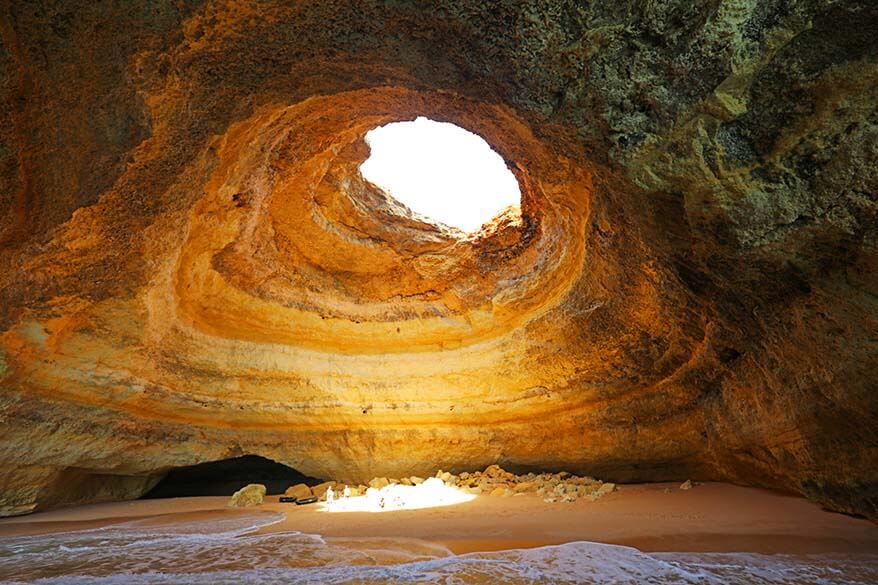
* This page contains affiliate links, which means that we may receive a small commission, at no cost to you, if you make a purchase through a link. More info: Disclosure .
Portugal Travel Tips & Destination Guides
- Best Things to Do in Portugal (Bucket List)
Central Portugal
- Best Towns and Cities in Portugal
- 10 days in Portugal: Trip Itinerary from Lisbon to Porto
- Nazaré Fishermen’s Village
- Portugal with Kids
- Best Things to Do in Lisbon
- How to See the Best of Lisbon in One Day
- Best Day Trips & Tours from Lisbon
- Best Things to Do in Sintra
- Sintra Itinerary for 1 to 3 days
- Best Things to Do in Algarve (Must-Sees)
- Where to Stay in Algarve
- Algarve Travel Tips
- Algarve Itinerary (Perfect for the first trip)
- Best Beaches in Algarve
- Benagil Cave (+ Is Benagil Cave Closed? Recent Updates ).
- Seven Hanging Valleys Trail
- Best Places for Kayaking in Algarve
- Best Towns to Visit in Algarve
- Best Things to Do in Sagres
- Best Things to Do in Faro
- Best Things to Do in Tavira
- Alte, Algarve
- Best Things to Do in Albufeira
- Best Beaches in Albufeira
- Where to Stay in Albufeira
- Best Restaurants in Albufeira
- Best Things to Do in Lagos
- Where to Stay in Lagos
- Ponta da Piedade
- Kayaking at Ponta da Piedade
- Best Things to Do in Algarve with Kids
- Best Water Parks in Algarve
- Zoomarine Algarve
- Slide & Splash Water Park in Algarve
- Best Things to Do in Madeira
- Best Things To Do in Funchal
- Best Hikes in Madeira
- Hidden Gems of Madeira (That Most Tourists Never See)
- Whale and Dolphin Watching in Madeira
- Achadas da Cruz Cable Car – Madeira’s Best Kept Secret
- Best Things to Do in São Miguel
- Best Things to Do in Ponta Delgada
- Best Things to Do in Sete Cidades
- Best Things to Do in Furnas
- Where to Stay in São Miguel Island
Plan Your Trip to Portugal
Best time to visit.
The best time to visit Portugal depends on what you are planning to do.
For the best weather, sightseeing, as well as beaches, the best time to visit is between May and September. July and August are the peak months, especially at the beaches, and it gets really hot for sightseeing in the cities.
For milder weather for sightseeing, the best time to visit Portugal is in the shoulder season. April-May and September-November are great months for that.
- What it’s like to visit Portugal in April
- What it’s like to visit Algarve in April
- What it’s like to visit Algarve in November
- What it’s like to visit Algarve in December
Good to know: Both – Madeira and the Azores – are year-round destinations with milder weather than in mainland Portugal. In summer, it usually doesn’t get nearly as hot as in Portugal; and in winter, you can expect spring-like temperatures, but also more wind and some rain.
Flying to Portugal
There are many international flight carriers flying directly to Portugal and you can find the best flight deals by searching on the most popular flight comparison sites. There are also many airlines flying to Portugal, so a lot depends on where you are coming from/traveling to.
TIP: If you are looking for flights to Madeira, the Azores, but also for flights to Portugal from abroad, it’s usually best to check the FlyTAP website . TAP Air Portugal is the main airline in the country offering the best selection of flights to all Portuguese destinations.
Also, TAP sometimes has good deals for flights that include a free stopover in Lisbon. We once took advantage of that and could visit two Portuguese destinations in one trip at no extra cost.
Accommodation in Portugal
Accommodation is quite affordable in Portugal, especially outside of the biggest cities and the most popular tourist attractions. There are accommodations for all budgets and it’s quite easy to find good quality for a reasonable price. We always use Booking.com for hotels as well as private rentals in Portugal.
Car Rental in Portugal
Portugal is one of the most affordable countries in Europe for car hire too. Still, it’s best to book in advance or you risk paying a couple of times more, especially if traveling in the high season and booking last minute.
Nowadays, we always use Booking.com’s car hire website and have always been able to find great deals all over Portugal. We always opt for their full insurance option as well – it costs a lot less than at the counter.
If you found this guide useful, don’t forget to bookmark it and share it with your friends. Are you on Pinterest? Pin this image!

This site uses Akismet to reduce spam. Learn how your comment data is processed .
- Destinations

Welcome to Guide2Portugal.com!
Discover the best and the beauty of Portugal with in-depth travel guides, inspiring videos, and insider tips on the best places to visit, explore, eat and stay across Portugal.
Meet Portugal’s New MICHELIN Starred Restaurants For 2024
Quinta da saraiva review – a boutique b&b in madeira, a quick guide to all portugal’s wine regions (mainland and islands), golf in tavira: the complete guide on where to play and stay, a quick guide to portugal’s 17 unesco world heritage sites, searching for sea caves sans crowds in the algarve.
This site uses cookies. By continuing to browse the site, you are agreeing to our use of cookies.
Cookie and Privacy Settings
We may request cookies to be set on your device. We use cookies to let us know when you visit our websites, how you interact with us, to enrich your user experience, and to customize your relationship with our website.
Click on the different category headings to find out more. You can also change some of your preferences. Note that blocking some types of cookies may impact your experience on our websites and the services we are able to offer.
These cookies are strictly necessary to provide you with services available through our website and to use some of its features.
Because these cookies are strictly necessary to deliver the website, refusing them will have impact how our site functions. You always can block or delete cookies by changing your browser settings and force blocking all cookies on this website. But this will always prompt you to accept/refuse cookies when revisiting our site.
We fully respect if you want to refuse cookies but to avoid asking you again and again kindly allow us to store a cookie for that. You are free to opt out any time or opt in for other cookies to get a better experience. If you refuse cookies we will remove all set cookies in our domain.
We provide you with a list of stored cookies on your computer in our domain so you can check what we stored. Due to security reasons we are not able to show or modify cookies from other domains. You can check these in your browser security settings.
These cookies collect information that is used either in aggregate form to help us understand how our website is being used or how effective our marketing campaigns are, or to help us customize our website and application for you in order to enhance your experience.
If you do not want that we track your visit to our site you can disable tracking in your browser here:
We also use different external services like Google Webfonts, Google Maps, and external Video providers. Since these providers may collect personal data like your IP address we allow you to block them here. Please be aware that this might heavily reduce the functionality and appearance of our site. Changes will take effect once you reload the page.
Google Webfont Settings:
Google Map Settings:
Google reCaptcha Settings:
Vimeo and Youtube video embeds:
The following cookies are also needed - You can choose if you want to allow them:
You can read about our cookies and privacy settings in detail on our Privacy Policy Page.
- Miranda do Douro
- Viana do Castelo
- Corvo, The Crow Island of the Azores
- Faial, The Blue Island of Azores
- Flores, The Yellow Island of Azores
- Graciosa, The White Island of the Azores
- Pico, The Black Island of Azores
- Santa Maria, The Sunshine Island of the Azores
- São Jorge, The Brown Island of Azores
- São Miguel, The Green Island of Azores
- Terceira Island, The Festive Island of Azores
- Central Portugal
- Lisbon and Tagus Valley
- Porto & Northern Portugal
- Portugal Survival Guide
- Entering Portugal
- Guide to Learning Portuguese
- Portugal Holidays
- Average Temperatures in Portugal
- Weather in Portugal
- Portugal Visa Guide
- Golden Visa Portugal
- Portugal Digital Nomad Visa 2023
- D7 Visa Guide
- D2 Visa Guide
- Food & Drink
- History and Culture

Ice Cream in Lisbon Turns “Bizzarro” with Strange and Unique Flavors
Spend your perfect summer on these 11 rooftop bars in lisbon, all that jazz: the bayou brings the magic of louisiana right to the heart of lisbon, what are conventual sweets a guide to portugal’s delicious desserts, countertop dining restaurants: the 28 best counters in lisbon, 13 abandoned places in portugal that will shock you, pimba: the cheeky and playful soundtrack to portugal’s santos populares festivals, 5 interesting são joão festival traditions in portugal, prehistoric animals that lived in portugal – dinosaurs, pterosaurs, and more, portugal from a to z.
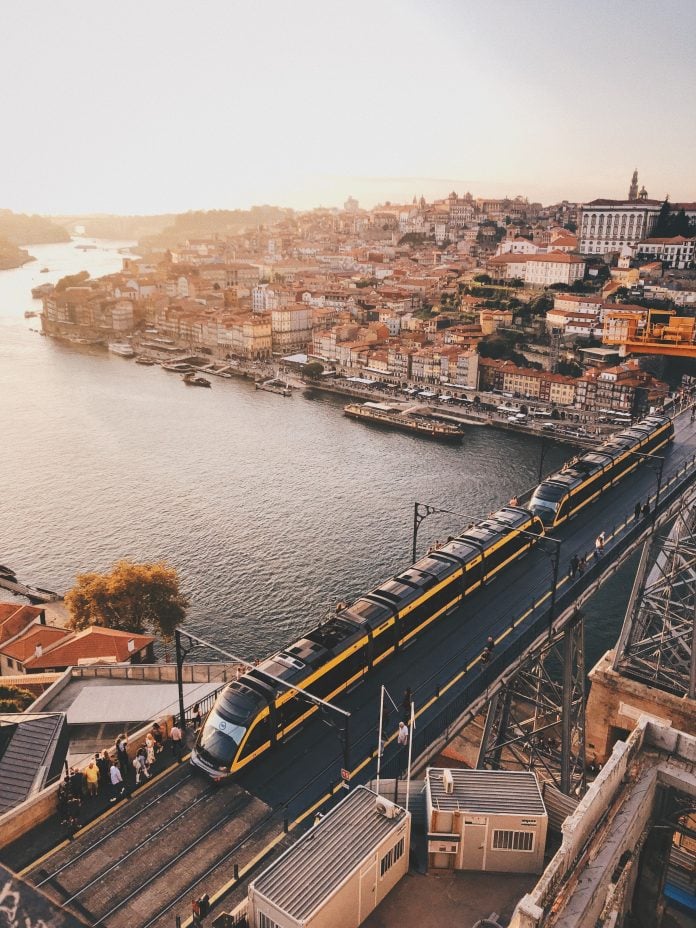
When people think about visiting Portugal, their first thought is to go to Lisbon , the capital. Porto might be the second-largest city in the country after Lisbon, but it is not the second best! 280 km north of Lisbon, the beautiful city of Porto lies along the Douro river. Home to Port wine, street art, and “francesinhas” , Porto is one of the world’s top 100 cities with the most international visitors. Over 1 million tourists visit Porto every year, as well as thousands of digital nomads and remote workers looking to make the city a temporary home.
One of the oldest in Europe, Porto’s old town in the city center is a UNESCO World Heritage site since 1996! It is no surprise that Porto is a city with a rich history and culture.
Porto has been inhabited by different groups throughout the ages, making it a melting point of heritage and history. The city was first inhabited by Celtic people. Then, during the Roman occupation of the Iberian Peninsula in the fourth century, the city was transformed into a commercial port. They renamed the city “Portus Cale”, meaning “Port of Cale” (Cale is the original name for Celtic). Fun fact: this has been referred to as the origin of the name Portugal. The Visigoths then took possession of the city in the sixth century but lost it to Moors in the eighth century. Christian forces won back the city in 997 when Porto became the capital of Portucalense (northern Portugal). The Moors won it back again for a few years but in 1092 it went back into Christian rule.
During the eighteenth and nineteenth centuries, the city center increased dramatically in population size and became an industrial center. It went on to become a major city in the struggle for the end of the monarchy. Writers and poets with progressive views lived in the city during the nineteenth century. In 1820, a liberal revolution started in Porto demanding the end of the monarchy. After Miguel of Portugal became king, Porto rebelled against the ruler and an eighteen-month siege by the King’s army occurred in 1832. Porto won and the King abdicated! Republicans revolted again in Porto in 1891 and many say these events led to the creation of the Portuguese Republic in 1910.
Since then, Porto has undergone many changes and improvements, like the construction of the Arrábida bridge over the Douro river in the 70s. Porto was elected Best European Destination in 2010 and 2014 and has seen a boom in tourism ever since, giving other European countries a run for their money. Our Porto city guide has all the Porto travel tips for your next vacation!
What to do in Porto, Portugal: Porto Travel Guide to Tourist Attractions, Activities, and Day Trips
Porto is one of the top cities to visit in Portugal, as well as all of Europe right now. The city offers many tourist attractions and activities that are affordable and will make visiting the city a trip to remember. From traditional Portuguese activities like a Port wine tour to historical attractions, as well as activities to do with children, the city has a lot to offer. Ready to explore Porto?
Book Tours & Activities in Porto
What are some traditional things to do in Porto, Portugal?
Wine tasting in porto.
A traditional thing to do in Porto is definitely a Port wine tasting, even if you are not necessarily a wine lover. Port wine is a Portuguese fortified wine produced in the Douro Valley. This wine is a sweet red wine that often pairs perfectly with dessert. On a wine tour, you can also taste other Portuguese wines including white and red wine. The best wine tastings are in Vila Nova de Gaia, across the Dom Luis Bridge from Porto, over the Douro river.
Caves Ferreira in Vila Nova de Gaia is one of the best places for a port tasting. Founded by a family of winemakers in 1751, Caves Ferreira is the only wine company from Porto that has always remained Portuguese throughout its history. They offer port tastings at different prices but a great option is a Classic visit for €15 per person.
You can also visit Ramos Pinto, an incredible vineyard established in 1880 by Adriano Ramos Pinto. They have over 80 hectares of vineyards across four Quintas (farms). You can enjoy a tour of their port wine cellars (Ramos Pinto Cellars) and a visit to their museum (Adriano Ramos Pinto Museum) that teaches you about the history of the brand for €12. You can do all this and have a port tasting of 5 wines at the end for around €25 in their tasting room.
While you’re in Vila Nova de Gaia, make sure to ride the Gaia cable car at sunset to get a view of the Douro river and Porto.
Book Port Wine Tastings & Tours in Porto

Fado houses in Porto
While many associate fado houses with Lisbon, Porto has many traditional taverns where you can listen to the iconic Portuguese music of fado. However, prices in Lisbon are often more expensive (€50+). In Porto, you can get the full experience of a large set menu and a live music show for a more affordable price, as well as a glass of Port wine.
A great place to go is Casa das Mariquinhas. Established in 1968 and close to S. Bento, all the great names of national fado have passed through its doors, singing fado most authentically, without microphones. You can enjoy a show and a large meal here for under €38.
Most fado houses do not allow you to just sit with a wine glass and enjoy the show. Usually, you need to book a table for a full meal. However, Galeria de Paris allows you to listen to a live fado show for only €15, which includes a glass of Port wine. Located in the old town, they also offer lunch menus for under €6.
Book Fado Live Show Ticket
What are some famous tourist attractions and monuments in porto, portugal.
One of the oldest cities in Europe, Porto has several famous historical attractions and monuments you cannot miss. Better yet – most of them are within walking distance of each other and located in the historic center, proclaimed a UNESCO World Heritage site. Here are our top 6 historical attractions and monuments to visit in Porto.
1. Clérigos Tower
Want to see the city of Porto at 75 meters high? Located in the city center of Porto, the Clérigos Tower, or the Tower of the Clerics was built in 1763 by Italian architect Nicolau Nasoni. You can climb the 225 steps to reach the top of the tower, where you can enjoy a 360 perspective of the city. This is particularly beautiful at night and the tower is open until 11 PM, making it one of the best places to watch the sunset. The tower is built on a Roman Catholic Baroque church that is decorated with motifs, a style of architecture from the seventeenth century. The monument also offers a museum on the history of the building.
You can get a guided tour of the museum, church, and tower for €6.50 during the day. You can also visit the tower at night for €5.
Book Torre dos Clerigos Ticket
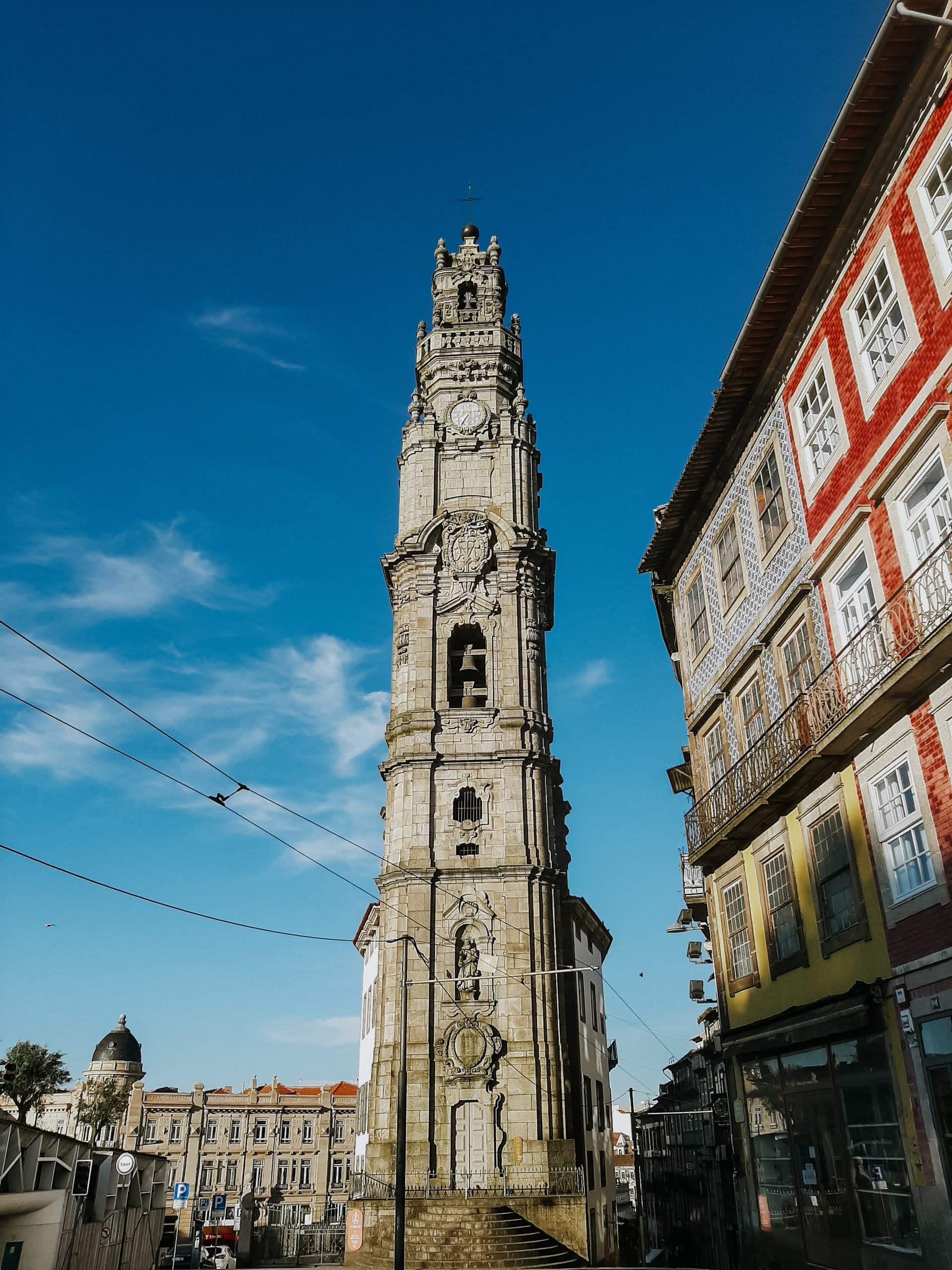
2. Livraria Lello
Livraria Lello is located in the city center of Porto and is one of the oldest bookstores in the country. It’s known for being one of the most beautiful bookstores in the world. Founded in 1906, Livraria Lello has been a highlight of cultural life in the city, with many literary figures visiting the place. If you google the place, many argue that JK Rowling, the author of Harry Potter wrote the books at Livraria Lello. Sorry to burst your bubble if you are a Harry Potter fanatic, but this isn’t true – JK Rowling has denied these claims and has never visited Livraria Lello.
Entrance to Livraria Lello used to be free, but they were getting 4,000 visits a day with long lines and less than 5% would buy a book. Now the tickets cost €5. Kids under 3 years old have free entrance.
Book Guided Walking Tours and Lello Bookshop
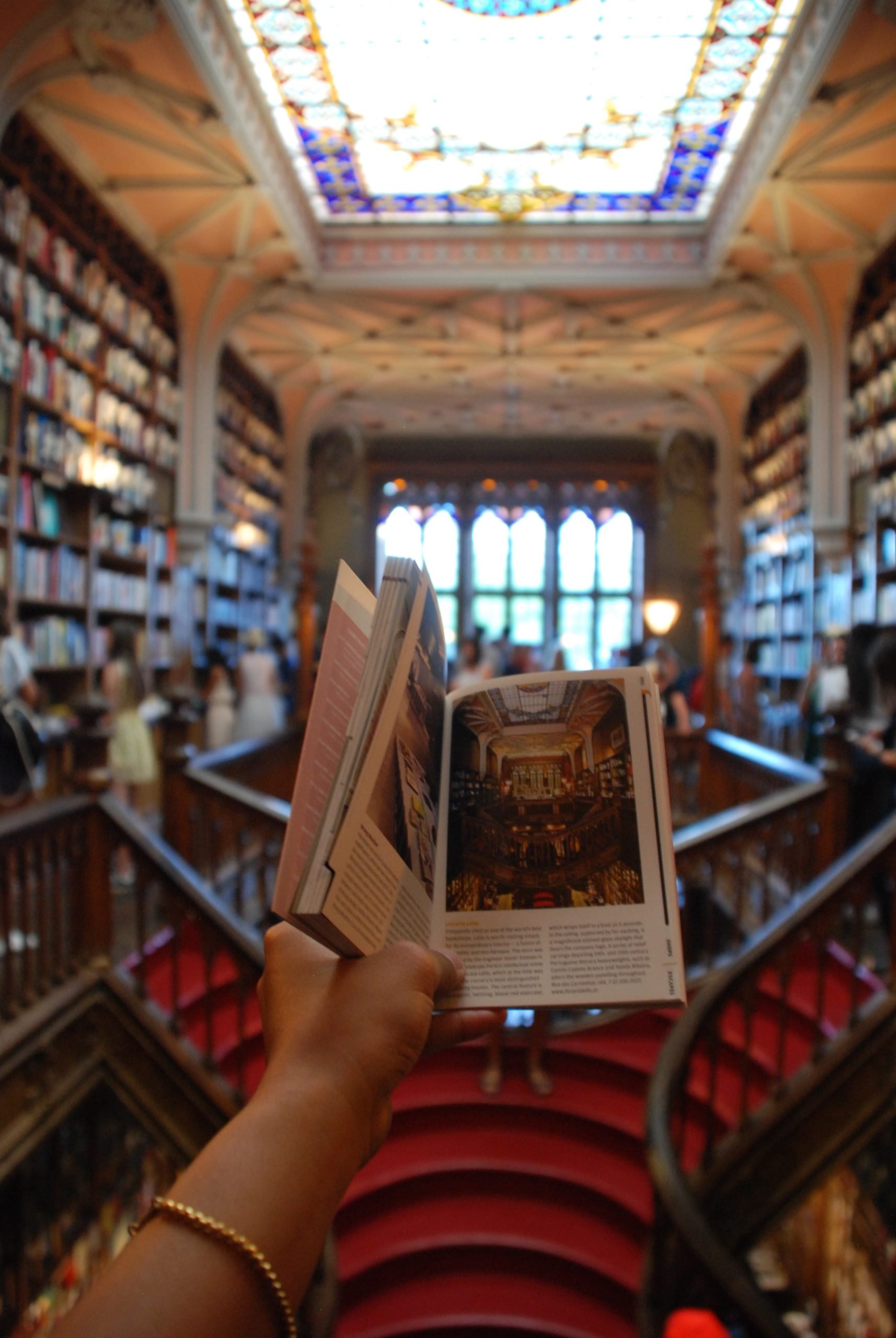
3. Carmo Church
Also known as Igreja do Carmo, this church is a combination of two buildings, one built in the 1600s and one in the 1700s. This monument is therefore one of the oldest in the old town of Porto. The church is built in baroque style, the same as the Clérigos Tower. A part of the church is decorated with Portuguese blue azulejos (tiles) made locally in Vila Nova de Gaia, across the Douro river from Porto. The exterior has two religious statues of the prophets Elijah and Elisha made in Italy.
You can enter the church for free! However, to visit the museum, catacombs, and Casa Escondida there is a fee of €3.50.
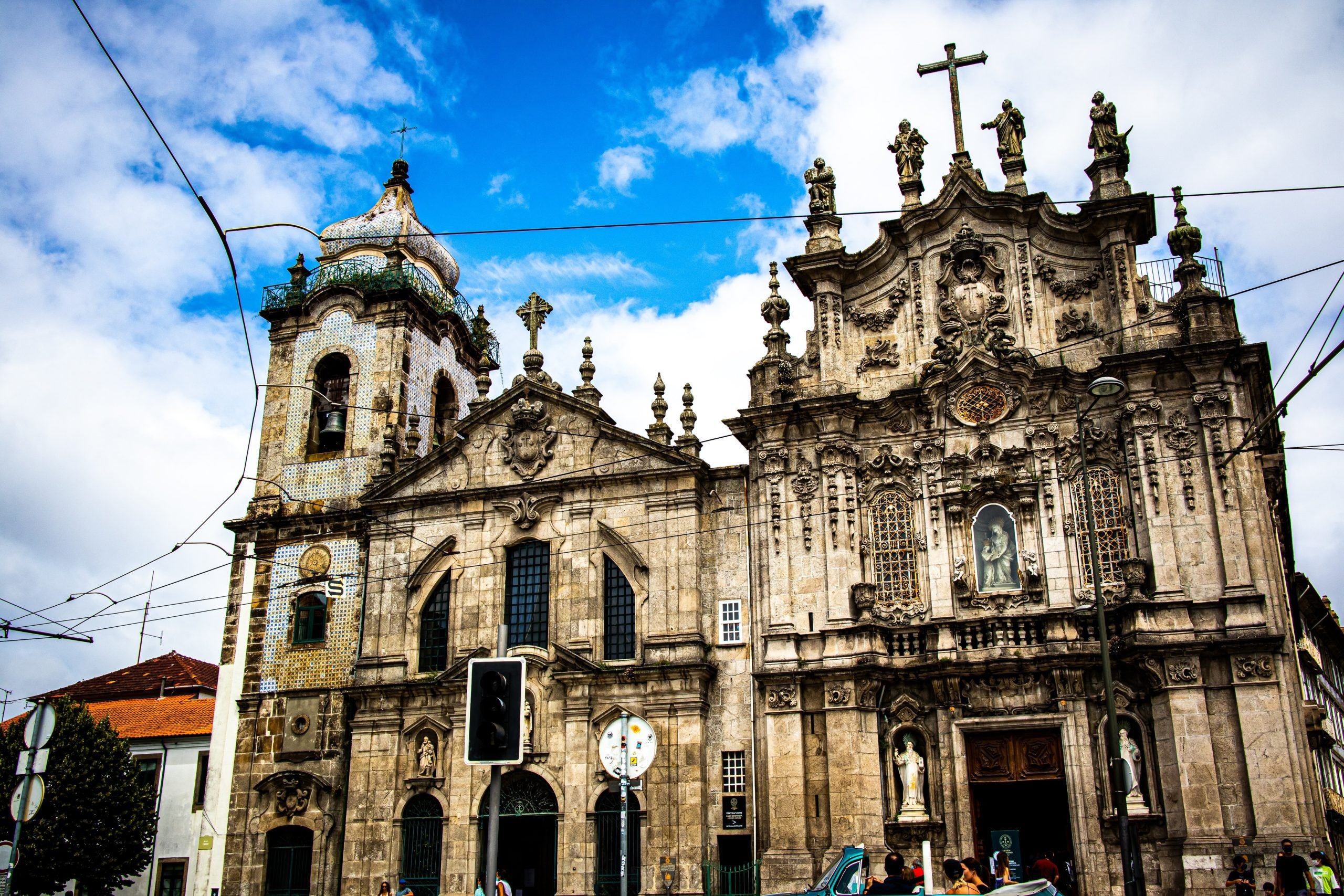
4 . Bolsa Palace
Palacio da Bolsa’s construction began in 1842 by the Porto Commercial Association on the ruins of the Saint Francis Convent. The name Palácio da Bolsa translates into “Stock Exchange Palace”. It no longer functions as a stock exchange but is still the headquarters of the association and is used for important events like the visit of Queen Elizabeth II in 1957. The Stock Exchange Palace was built in neoclassical style and displays furniture by Portuguese architect José Marques da Silva and sculptures by the famous sculptor Teixeira Lopes. The most famous room is the “Arab Room” built between 1862 and 1880 and decorated in the Moorish Revival style. Today, this room is used as a hall for prestigious visitors to Porto like heads of state.
You can visit the palace for €10 or €6.50 for children, students, and seniors. Children under 12 years old can visit the palace for free.
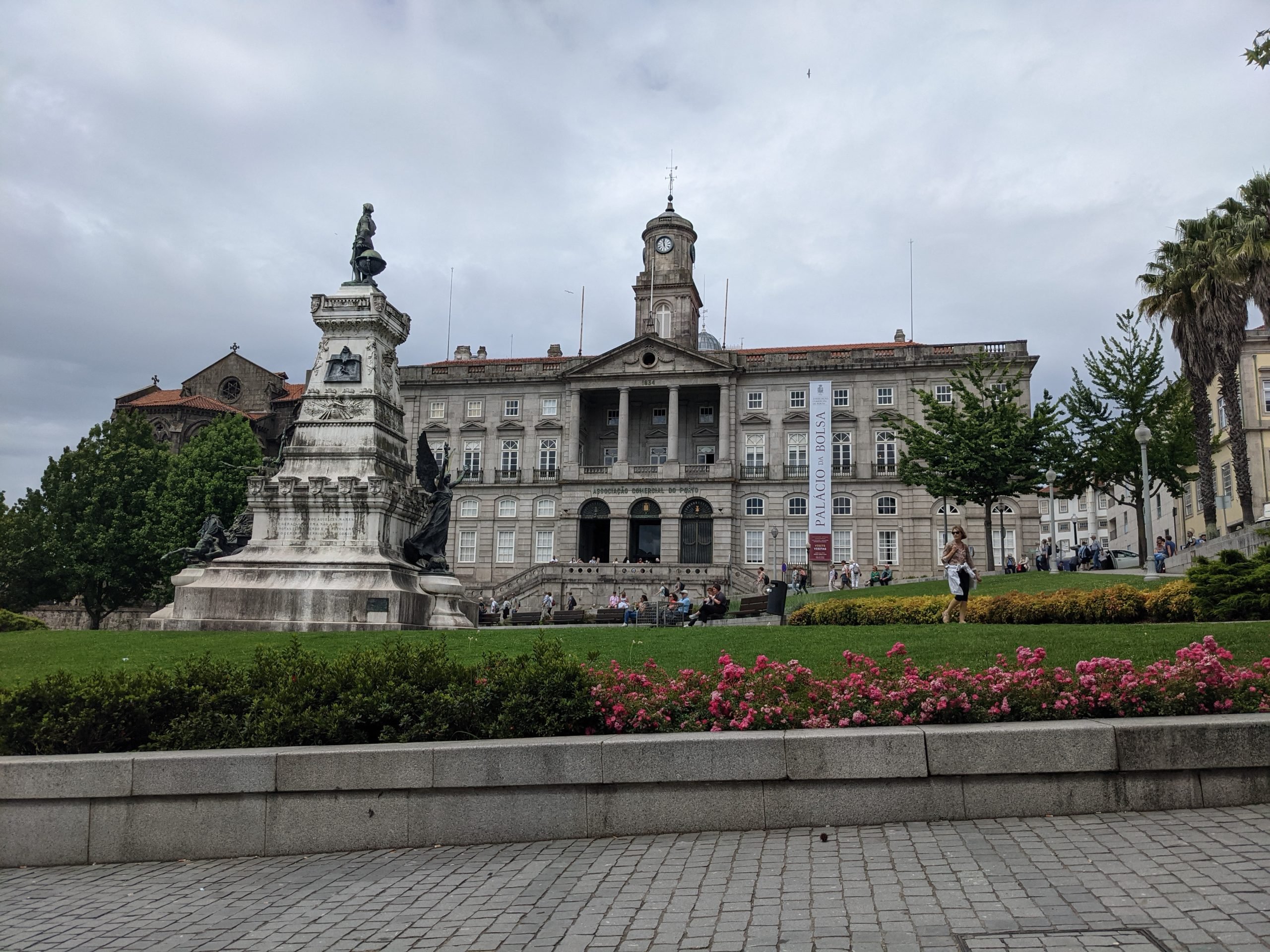
Book Palacio da Bolsa Guided Tour
5. porto cathedral.
Mostly known as Sé do Porto, this Roman Catholic cathedral is a national monument and the most important religious building in all of Porto. The Porto Cathedral still holds a mass every day at 11 am that you can attend for free. The construction of the cathedral began in the twelfth century and was finally fully built in 1737. It was renovated in many architectural styles throughout the centuries including Gothic and Baroque. Today, it has a beautiful mixture of many styles.
The entrance to the Porto Cathedral is free, but if you want to access the fourteenth-century cloister you pay €3 ticket.
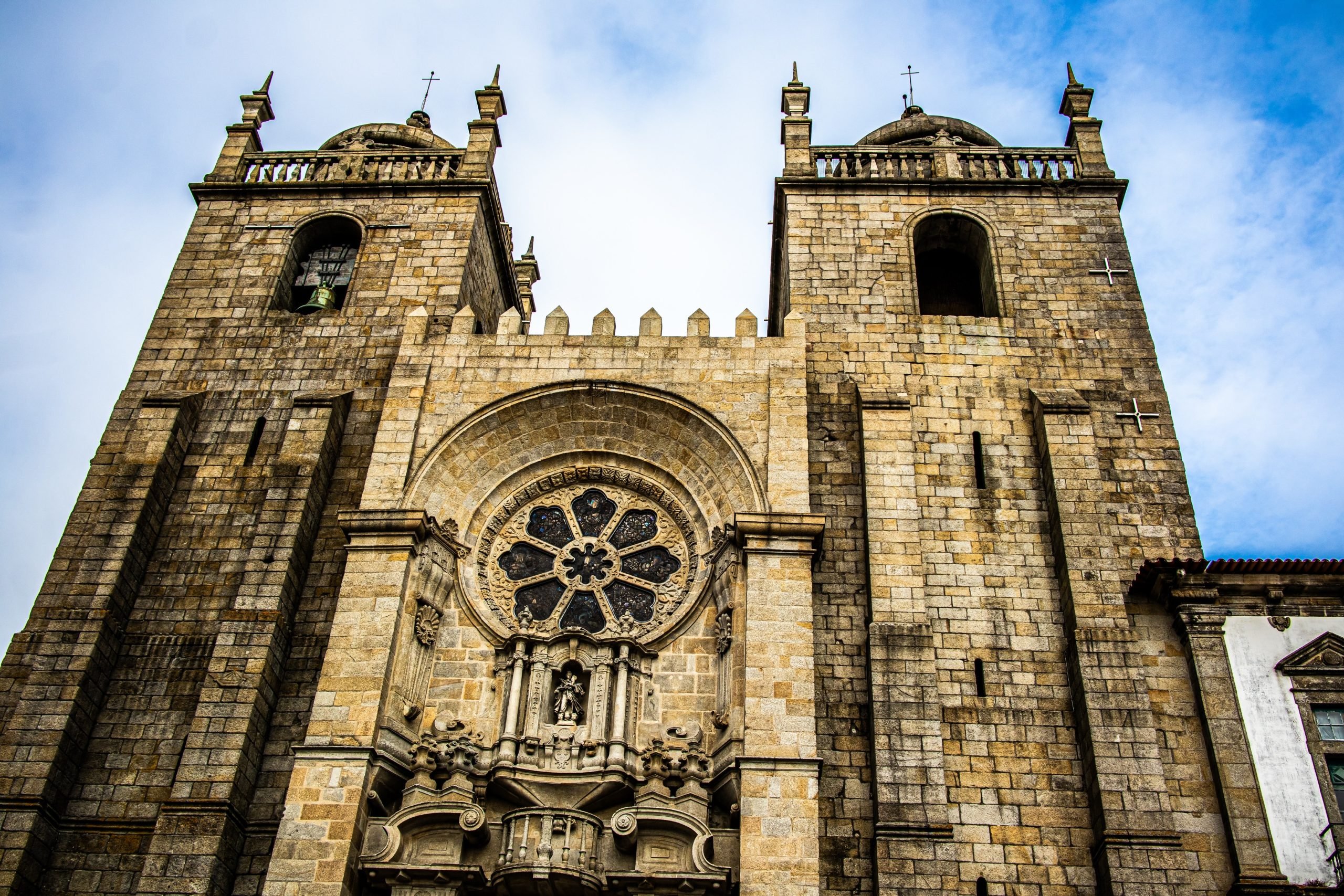
6. Majestic Cafe
Established in 1921, this café is known as one of the most beautiful in Europe and is located in the heart of the city center. This café was first called Elite as it was catered to the finest in society and intellectuals. The name was changed to Majestic Cafe, as Elite alluded to the monarchy and that did not sit well with the republican intellectuals that visited the place. The building was declared a “Public Interest Building” in 1983 and won multiple awards including the Municipal Merit Medal – Grade – Gold” (2011). This is a must-see in Porto but the prices are quite high. The café offers many baked delicacies such as “Pastel de Nata”, meals, and an afternoon tea for €25 per person. An expresso costs €5 here, while in other cafés it should not cost you more than €1. But for the experience, it is well worth it.
Best Things to do in Porto
Day trips from porto, portugal.
Porto has a lot to offer, but so do the surrounding areas. If you visit Porto, it would be a waste to not take a day trip. Here are our top 3 favorite day trips from Porto you cannot miss. If you are visiting for at least a week, taking all 3 would make it the perfect trip.
1. Douro Valley
Listed as a UNESCO World Heritage site, the Douro Valley should be on the top of your list for a day trip. The Douro Valley is a cultural landscape of vineyards where Douro wines are grown and produced at traditional wine cellars. Departing from Porto, the Douro river flows in the middle of these green hills with vineyards. Beware, visiting the Douro Valley is quite expensive for Portuguese standards, but a once in a lifetime opportunity.
The best way to visit the Douro Valley is by hiring a private car transfer or renting a car as public transportation is scarce in the area, especially if you want to visit multiple vineyards for wine tastings. Alternatively, you can also book a stunning Douro river cruise that stops at vineyards.
The 3 best vineyards to visit in Douro are the following: Quinta da Roêda (Pinhão), Quinta do Crasto (Sabrosa), and Quinta do Seixo (Valença do Douro).
Quinta da Roêda does not just offer Port wine tastings, but also, visits to the vineyards, picnics, workshops, and more. You can explore the gorgeous vineyard with a travel guide and have a tasting of three wines for only €12 per person. Their packages go up to €44 per person for a larger number and variety of wines. For a luxurious and romantic lunch out with wine, you can reserve their picnic package on the shaded terrace, overlooking the vineyards and Douro river. Prices for this range from €30 to €48 per person depending on the basket selected.
Quinta do Crasto is included in the Top 20 of the World’s Best Vineyards, winning 16th place in 2021. The wine tasting here lasts around 90 minutes where you get to taste 5 of their wines, visit the port wine cellars, and more for €29 per person.
Quinta do Seixo has over 100 hectares and is one of the most traditional wine-producing estates in the region. The vines are over one hundred years old! The Quinta also has very advanced winemaking technology that is perfectly integrated with the landscape. They have a variety of packages for wine-loving visitors. Their cheapest visit is €15 for a 40-minute tour of the winery and tasting of 2 port wines. Their most luxurious option is a 3-hour picnic in the vineyard where you can taste their wines and enjoy Douro cuisine for €40 per person (only available from March to October).
Alternatively, if you want to enjoy the views of the Douro river rather than spending the day vineyard “hopping”, you could travel by bus, train, and boat for the full experience. You can book a day river cruise in the Douro river from Porto and come back by bus or train. This 12-hour day cruise from Porto includes a return ticket so you can travel back to the city through public transportation. It also includes breakfast, lunch, and a wine tasting at the end in Pinhão where you can catch the bus or train back to Porto. The cruise costs €86 per person.
Book Douro Valley Tours
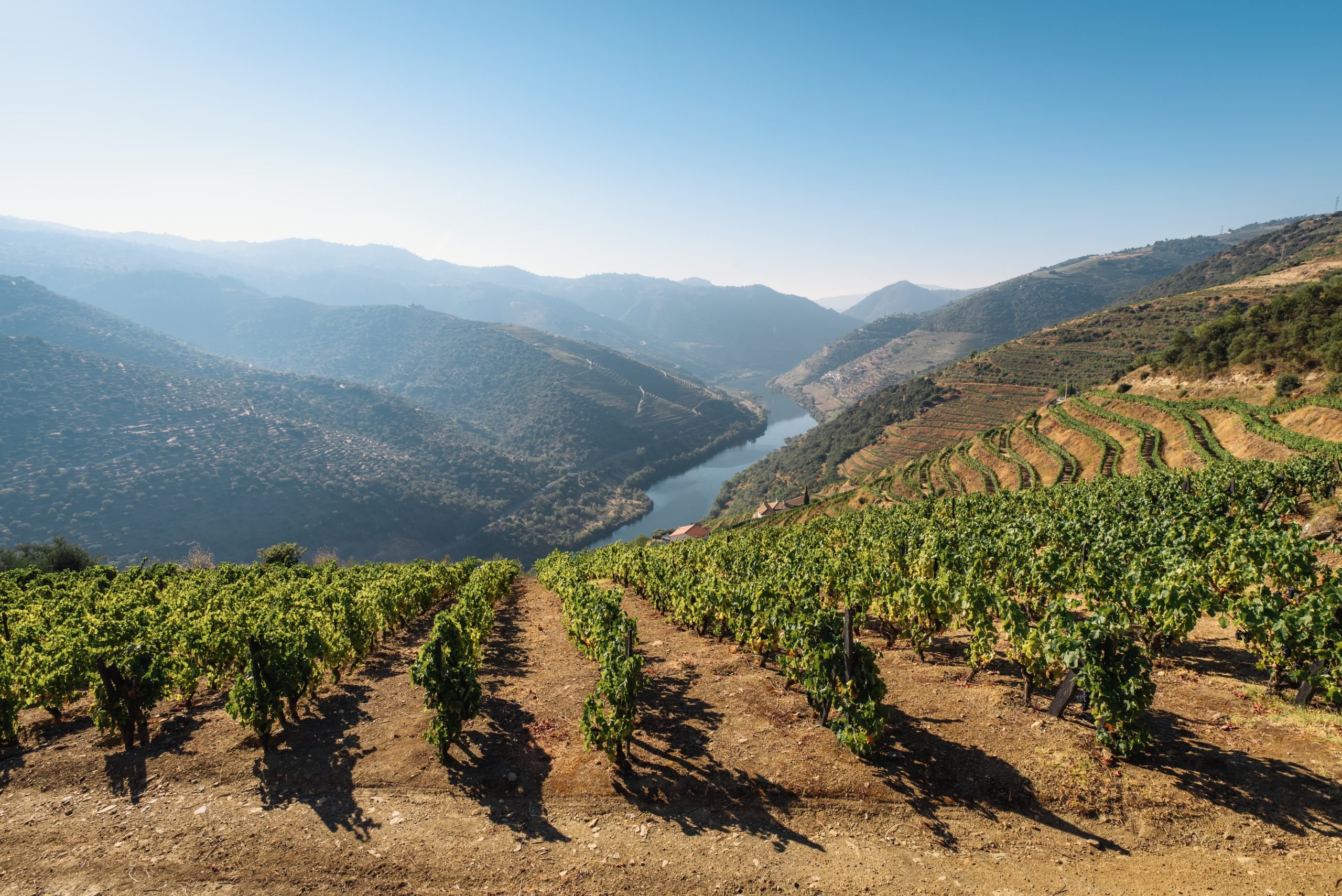
2. Peneda-Gerês National Park
A one-hour drive from Porto, Gerês is the oldest protected area in the country and the only national park in Portugal. The park covers an area of 695.93 km 2 and occasionally gets some snow in the winter. This is the perfect day trip for adventure-seeking travelers! There are many hiking trails and “miradouros” (viewpoints) where you can get wonderful views. There are also many lagoons and rivers where you can take a dip in the summer months, perfect for after a hike. You can also spend the day exploring medieval villages that are uninhabited. Make sure to pack some food and a water bottle as some areas are far away from infrastructures.
How do you get to Gerês from Porto? The best way is to book a car rental to drive the 100 kilometers. Public transportation to Gerês is almost nonexistent. The only way to get there is to get a one-hour train to Braga (€5) and then take a 43m taxi (€30) or a 1h30 bus (€2) to the park. This will take up half of your day, considering that the bus and taxis will also probably be late.
However, you can always book a tour, this is a great option for a whole day. This amazing tour picks you up from your accommodation in Porto (round-trip) and takes you to the best hiking and swimming spots in Gerês. You can also venture off the track as you’ll be in a 4×4 and so can explore secret places! This 10-hour tour also includes local food and wine at a typical restaurant. The tour costs €85 per person.
Book Peneda-Geres National Park Tours
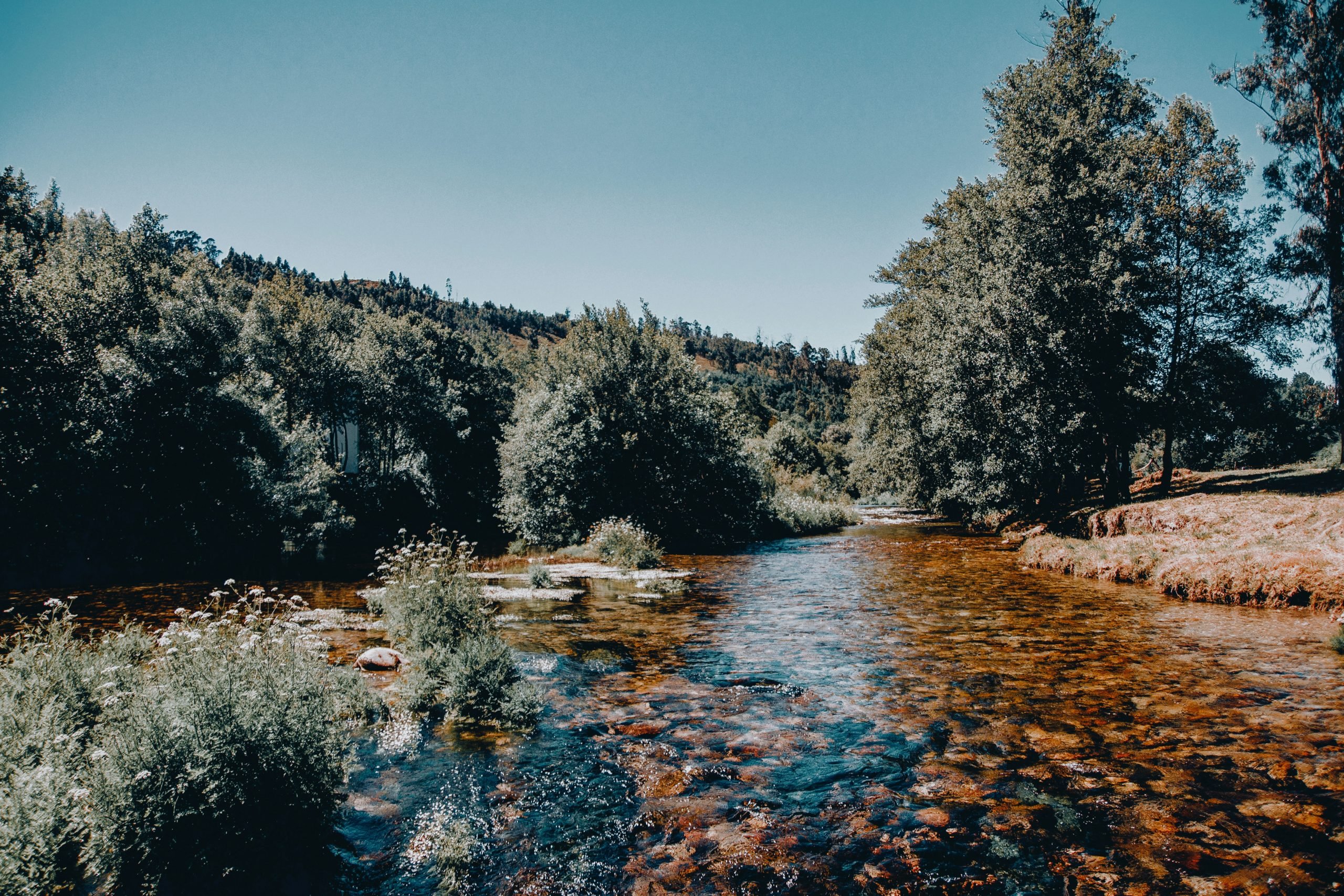
3. Matosinhos
Last but not least, if you are looking for a sunny day at the beach close to Porto , head to Matosinhos. This fishing town is a 20-minute drive or a 40-minute bus ride from Porto. Matosinhos is famous for its beach, Praia de Matosinhos, the largest beach close to Porto. The beach is perfect for a relaxing day away from the city during the summer. The beach has a lot to offer: beach sports like surfing in the wavey Atlantic ocean, lifeguards supervising the area, as well as plenty of cafes and beach bars.
The best time to go is between June and August during the week. Avoid the weekends as Matosinhos beach will be overly crowded during this time.
You can also book a surfing experience here for €40 which is perfect for a family with kids. This surf experience includes a transfer from Porto to Matosinhos. Don’t know how to surf? Don’t worry! The instructions in this experience will teach you.
You can also choose to visit other beaches, like Praia de Leca da Palmeira which also has saltwater swimming pools that are much warmer than the sea.
You can also visit the Castelo do Queijo (Cheese Castle), a fort constructed in the seventeenth century after Portugal gained independence from Spain. The fort has a small museum that costs €0.50 to enter.
The town is also known for its seafood, allowing you to discover the best of Portuguese culture. The morning fish market sells fresh fish every day at the port and you can also taste the finest fish dishes at many restaurants. Some amazing seafood restaurants overlooking the Atlantic ocean in Matosinhos are TITO 2 (around €40 for two people), A Marisqueira de Matosinhos (around €50 for two people), and Marisqueria A Antiga (around €70 for two people).
Book Matosinhos Beach Activities
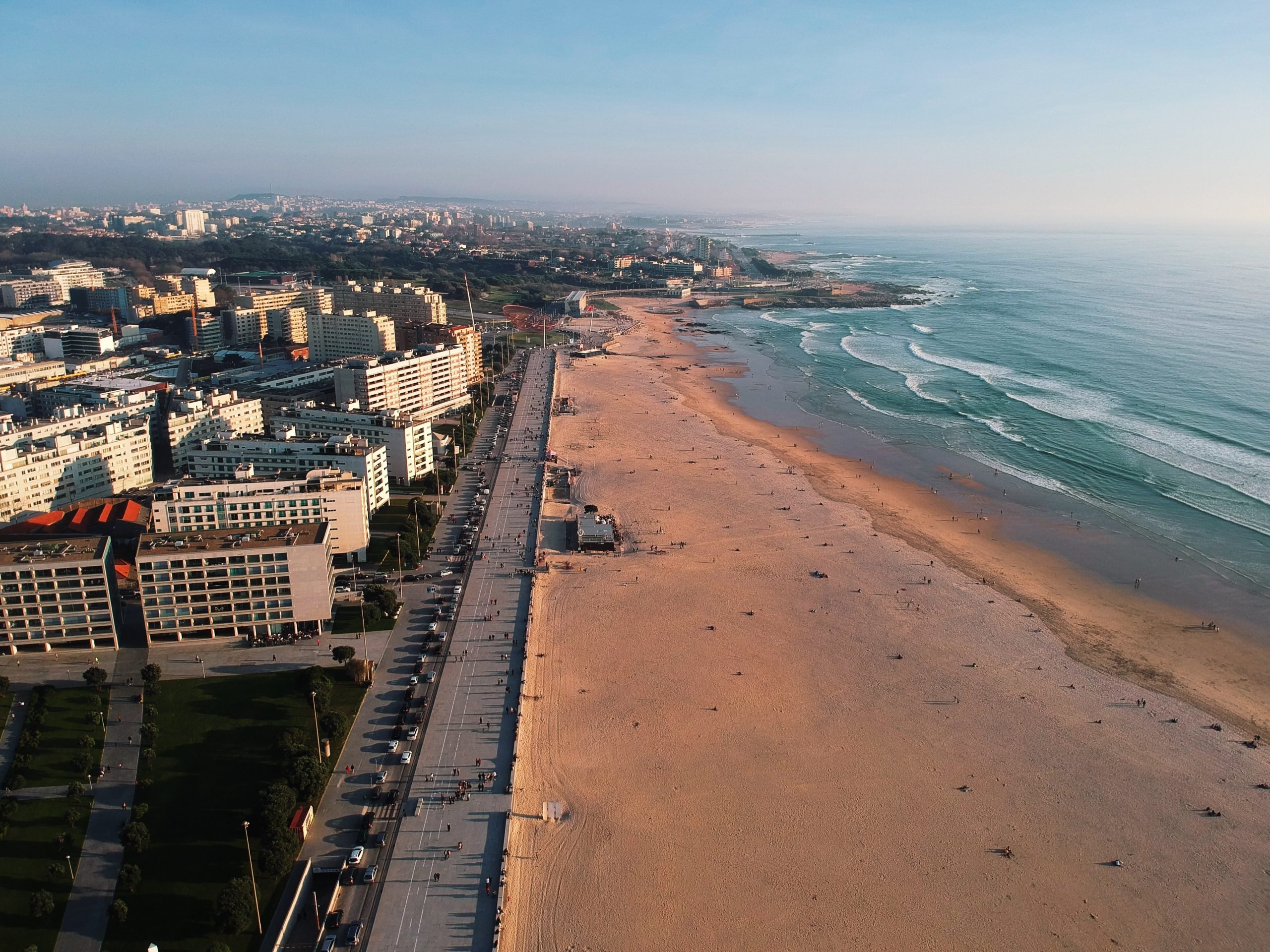
Travel Guide to Porto & Northern Portugal
What are some activities for kids in Porto, Portugal?
Porto has plenty of stuff to do with the kids, catering to locals and tourists alike. A great thing to do in Porto is visiting Sea Life, an experience the whole family will enjoy. Sea Life has over 30 displays and 3,000 sea creatures. This place has an underwater tunnel you can walk through and observe the sea life. Tickets cost €14 and entrance is free for kids under 3. If you want a surreal experience, book the VIP Turtle Feeding where you can go backstage and feed Mariza, the green turtle for €24.
Book Sea Life Ticket
Another thing to do with kids in Porto is to visit the World of Discoveries in the center, an interactive museum and theme park that teaches you about Portuguese navigators. Kids younger than 3 years old have free access, kids from 4 to 12 years old pay €9, and adults pay €15. However, bear in mind that some parents feel like this place glorifies the era of Portuguese “discoveries” and silences the victims of colonialism.
Book World of Discoveries Ticket
Lastly, if you don’t mind getting away from the city, Zoo Santo Inácio in Vila Nova da Gaia is a 15-minute drive from Porto. They have over 600 animals and 200 species living in the zoo. From a 40-meter glass tunnel where you can see a lion’s habitat to a reptile area with the largest snake in the world, the reticulated python at 11 meters long, this zoo is an incredible experience. Kids under 3 do not pay, while kids under 13 pay €10. Adults pay €15.
What are some free things to do in Porto, Portugal?
Due to its beautiful views and public historical buildings, Porto has a lot for those on a budget . Exploring this magical city comes at zero cost – think of it as a free walking tour!
The riverfront district of Ribeira is the perfect place for a walk as it was declared a UNESCO World Heritage Site. You can take photos of Dom Luis bridge and enjoy a panoramic view of the city. There are pedestrian walking lanes along the bridge so you can actually cross it.
The gardens of the Palacio de Cristal are only a 15-minute walk from the center. The landscaped gardens were designed in the nineteenth century and offer views of the Douro river, as well as walking paths and fountains. Perfect for a picnic!
You should also visit a Casa Da Musica (House of Music), an iconic concert hall in the center of the city, built in 2005. Designed by architect Rem Koolhaas. Although a tour of the inside costs €10, the best part of this place is the exterior. Perfect to take photos!

If you love photography, visit the Centro Português de Fotografia. This museum showcases works from Portuguese and international photographers and has free exhibitions. The building once served as a prison which you will notice by the iron gates and cells inside the museum.
Finally, the São Bento railway station is not just perfect for traveling. This station has an atrium covered in 22,000 azulejos (tiles), created by artist Jorge Colaço. The azulejos feature iconic episodes of Portuguese history. São Bento railway station is often described as one of the most beautiful train stations in the world!
Where to eat in Porto, Portugal?
This Porto travel guide would be meaningless without the most important part of Portuguese culture – food. Porto offers an incredible culinary experience at a much more affordable price than Lisbon. From “francesinhas” to seafood and wine, Porto is the perfect place for a foodie. The options are limitless, so we have selected our favorite restaurants for your needs. Porto has meals for everyone’s taste: traditional food, vegan meals, as well as luxury dining for those looking for an experience.
Porto Food Tours & Tastings
Portuguese food: where to eat traditional portuguese food in porto, portugal.
Porto is home to many restaurants serving Northern cuisine that will make you feel like a local. But first, let’s go through the typical Portuense (and Portuguese) foods you need to try in Porto. These are all definitely must-tries!
- “Francesinha”: A trip to Porto needs a francesinha. This meal includes ham, sausage, and steak sandwich with loads of melted cheese and a fried egg on top, and spiced tomato and beer sauce. It’s served with french fries.
- “Tripas à moda do Porto”: This is a heavy meat-based dish, with beans, carrots, steak, veal, and pork stomach. People have been eating this in Porto for hundreds of years.
- “Sandes de pernil”: a roast pork butt sandwich with “queijo da serra” (a mountain cheese).
- “Bacalhau: codfish. There are 365 ways to serve codfish in Portugal, our favorite is “bacalhau à brás”, a dish made from shreds of codfish, onions, chopped potatoes, and scrambled eggs. Usually topped with black olives and parsley.
- Caldo verde: a green vegetable soup with Portuguese sausage.
- “Alheira”: a Portuguese alheira sausage made from chicken, turkey, duck, or pheasant. Usually eaten with fries and a fried egg.
- “Broa de Avintes: a famous bread from Porto that is dark brown.
- “Tarde de Amendoa”: an almond tart that is typical of Douro as this region cultivates most of the countries almonds. The tart has almonds, sugar, butter, and milk.
- “Sardinhas assadas”: sardines that are usually plated on top of bread and paired with potatoes, peppers, and salad.
Now that you know how to navigate a menu, here are our top 3 places to eat traditional food in Porto.
1. Taberna Santo António, Rua Virtudes
Located in the city center, a classic Porto “tasca” (Portuguese tavern), you’ll be treated like a local here. You can try various traditional Portuguese dishes for a very cheap price. On Sundays, they have “cozido à Portuguesa”, a traditional meat stew with pork, sausages, rice, and vegetables for 7€. They also have “bifanas”, a steak sandwich for under €2. The roast pork is also amazing! You can get a full meal here for under €10.
2. Casa Guedes, Praça dos Poveiros & Rua Actor João Guedes
This place is known for having the best “sandes de pernil” in Porto, a roast pork butt sandwich with mountain cheese. It was initially established in 1987 by the Correia brothers as a snack bar, but since then, they have opened two new spaces. You can try any of these, they are all amazing:
- Casa Guedes Tradicional (1987): Praça dos Poveiros 130
- Casa Guedes Rooftop (2019): Praça dos Poveiros 76
- Casa Guedes Progresso (2020): Rua Actor João Guedes 5
Their “sandes de pernil” only costs €3.90. They also have other sandwiches: Portuguese ham, cured pork, cured black pork, and softer sheep cheese sandwich (all under €4.50). This is also a great place to try the “caldo verde” (green soup) for €1.70 and the iconic “francesinha” with melted cheese. You can have a whole meal here for €6.
3. Tasquinha Ze Povinho , Rua Clemente Meneres
One of the best “tascas” in Porto, this family-run restaurant offers traditional dishes that make you feel at home. The owner of this restaurant prides herself on creating dishes that reflect her Portuguese roots, rather than catering to tourists. The restaurant offers authentic dishes that everyone must try like “francesinhas” and “tripas à moda do Porto”.You can get a meal here for under €7.

For the plant-based: where to eat vegan food in Porto, Portugal?
If you are a vegan planning your trip to Porto, look no further. The vegan scene in Porto has been booming recently. A few years ago, there were few options for plant-based food, but now there are hundreds of options for vegans. It has truly become a vegan-friendly city! Here are our top three vegan places in Porto.
1. Arvore do Mundo, Rua do Duque de Lole
Arvore do Mundo is not just a vegan restaurant, but also a gallery where you can check out local art. They have a garden and terrace where you can have a vegan meal and relax, as well as toys and books for kids.
This vegan restaurant has lunch menus for €10 per person and the average cost for dinner is around €12 per person.
2. Kind Kitchen , Rua do Bonjardim
Located in Baixa, the interior of the restaurant is modern and clean and you can watch the food being prepared in their open-style kitchen. kind Kitchen has a wide range of dishes including Buddha bowls, burgers, and cakes. They even have the famous beyond burger that tastes like real meat! This vegan restaurant also has a vegan version of the iconic Porto dish “francesinha” with plant-based melted cheese.
The lunch menus are under €10 per person and the average cost for dinner is around €12 per person.
3. My Green Pastry , Praça da República
Missing out on the amazing desserts in Porto? Don’t worry, my Green Pastry is a vegan pastry shop that will satisfy your sweet tooth. This place focuses on local and seasonal ingredients and is also plastic-free. My Green Pastry also has savory snacks that are completely plant-based and organic. They also offer a large brunch on Saturdays for €18.
Luxury dining: what are the best Michelin star restaurants in Porto, Portugal?
Looking for a luxurious night out? Prepare to splurge! Porto has 5 Michelin-starred restaurants that will provide you with a once in a lifetime experience. We have chosen our two favorite Michelin star restaurants in Porto.
1. Pedro Lemos, Rua do Padre Luís Cabral
A 20-minute car ride from the center of Porto, Pedro Lemos is a renowned restaurant in a restored stone house. Opened in 2009 by Chef Pedro Lemos, it was the first restaurant in Porto to be awarded a Michelin star. Pedro Lemos is located in Foz, a historical neighborhood in Porto. The restaurant has contemporary decor and a rooftop terrace where you can enjoy a beautiful view. It also has a wine cellar where group dinners can take place. Pedro Lemos has excellent fish dishes that are Portuguese, as well as international cuisine. The foie gras is to die for!
Menus start at €120 per person where you can taste 8 dishes. The menu for wine starts at €65 and these are carefully selected to pair with your meal.
2. Antiqvvm , Rua de Entre Quintas
Located close to Museo Romántico, this restaurant is situated in a park in the center of Porto. You get a gorgeous view of the Douro River. Chef Vitor Matos uses seasonal and local ingredients to produce unbelievable dishes. This Michelin 1-star restaurant has Portuguese wines from every region, selected by the sommelier António Lopes. Try the red mullet with cauliflower and sea urchin sauce.
You can choose from a set menu or opt for the à la carte menu where vegetarian options are available. A set menu here will cost you at least €135 and the wine menu €65.
Guide to Porto Restaurants 2022
Getting around: how does public transportation work in porto, portugal.
Getting around in Porto is fairly easy. You can walk most places, but you also have access to efficient public transportation, including train, tram, and bus routes. Transportation costs are also incredibly affordable, with travel cards available. The best way to get from Porto airport to the city center is by renting a car or booking a 20-minute taxi.
What travel card to buy for public transportation in Porto, Portugal?
You have travel card options to go around Porto: the Porto Card + travel card or the Andante Card.
The Porto card + travel card is perfect if you are going to visit museums. You get free bus and metro transport, free entry to 6 museums (including a contemporary art museum), and 50% off in 14 monuments. You also get a free train ride to the beach. You can buy this card from official tourist offices, some railway stations, and Francisco Sa Carneiro Airport. You cannot purchase it at a metro station. Here are the prices for the Porto Card + travel card:
- 2-days: €20
- 3-days: €25
- 4-days: €33
Book the Porto Travel Card
There are two types of Andante cards, the Andante 24 card, and the Andante Tour card. You can purchase these in Andante shops in metro stations and the airport, as well as tourist offices. The Andante 24 card gives you 24-hour unlimited access to the metro, buses, and some trains. The price of the card depends on the zone you purchase it for. If you are just getting around central Porto, purchase a zone 2 Andante 24 card that costs €4.15. You can also get an Adante Tour card for tourists that allows you to travel to all the zones. An Andante Tour 1 for 24 hours costs €7 and an Andante Tour 3 for 72 hours costs €15.
The metro in Porto, Portugal
The metro is one of the fastest public transportation options, as well as the most sustainable (after walking). 12,000 cars stopped circulating because of the Porto metro.
The metro has 6 lines and 81 stations and goes through the city’s main districts, as well as outskirts. The metro works from 6 am to 1 am. A single ticket costs €1.70. Make sure to watch out for pickpocketers and stay safe!

The tram in Porto, Portugal
Like in Lisbon, the trams are a cultural and historical experience. They are a great way to get to know the city, but they are much slower than other means of public transportation. The locals use to rely on the tram before the bus and metro lines were established, but now this mode of transport is best for tourists and those wanting a unique experience.
A single fare will cost you €3.
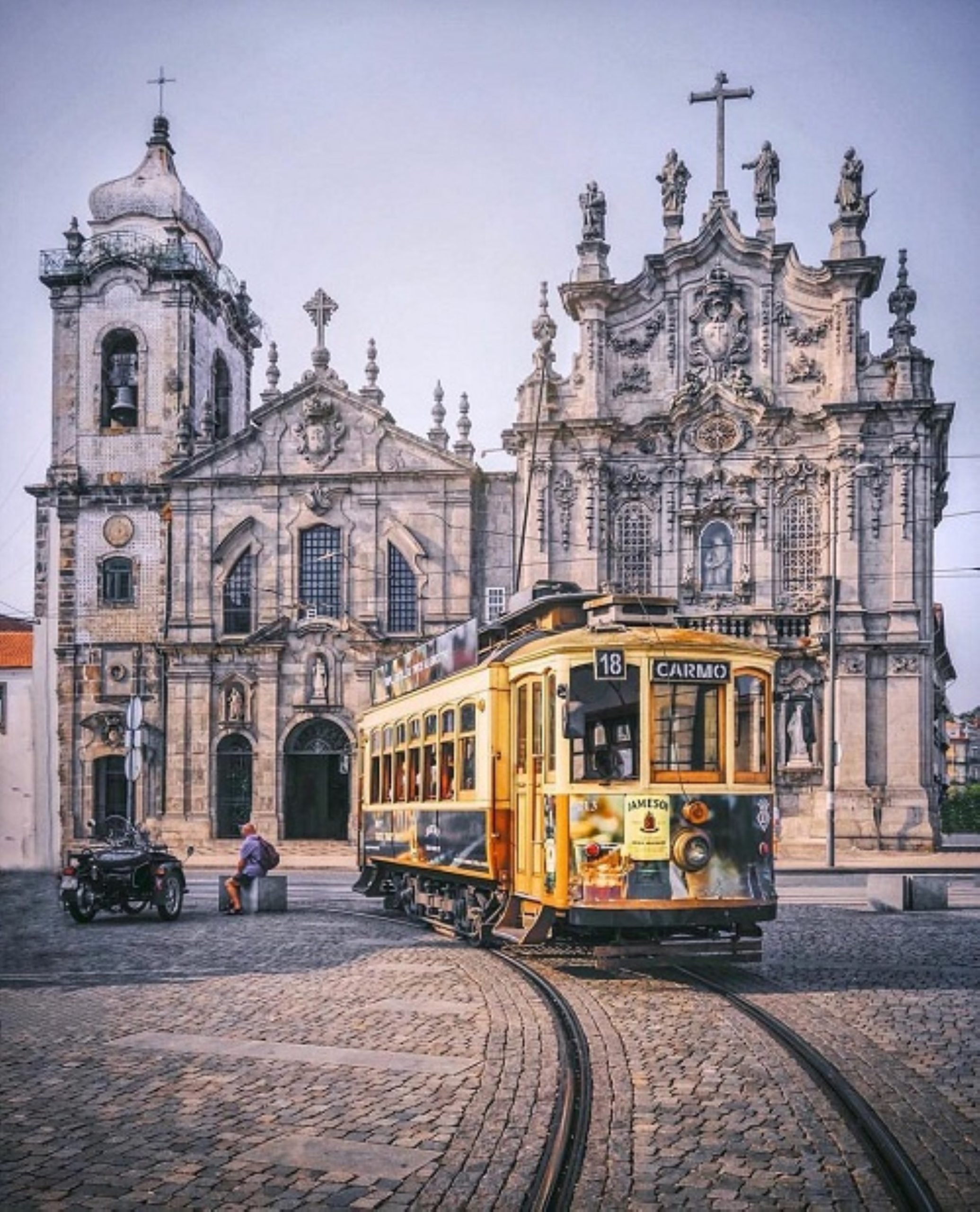
The bus in Porto, Portugal
The bus is the cheapest mode of transportation in all of Porto. It can take you places where the metro line does not reach and can take you to Vila Nova de Gaia, as well as Matosinhos for the beach.
Don’t forget to reach out your arm when the bus driver passes by so that they stop to let you get on!
A single fare ticket bought with the driver costs €1.80.
The train in Porto, Portugal
The trains are great for getting out of Porto, to cities nearby. Don’t travel within Porto by train. You can take the train from São Bento Station to Braga (€15), and other cities.
A single fare can cost you between €1.50 and can go up to €30 depending on where you go.
Guide to Bars in Porto
Porto guide: final thoughts.
For you’re next trip to Portugal, you must visit Porto. In fact, put it at the top of your list. From incredible food to its World Site Heritage historic center and views along the Douro river, the city has something to offer for everyone. Whether you are a solo traveler or backpacking, Porto is an affordable city to visit that can still make it a trip to remember. This city fits everyone’s budget from cheap options for backpackers to luxurious hotels and Michelin-starred restaurants. Hopefully, this extensive Porto travel guide has taught you everything you need to travel to the Portuguese city. It’s time to find yourself some cheap flights to Porto airport!
Take a look at our ultimate guides to Lisbon , Albufeira , and more with all the information you need for your next trip to Portugal.
Receive the latest news, travel information, stories, offers and more!
Join our FB group Portugal Travel & Living for all things Portugal and news updates
Related articles, guide to renting in portugal, international guide to real estate in portugal: buying a house in portugal 2024, portugal’s golden visa program is still open in 2024, most popular, latest articles, foreign workers in portugal have increased 24% per year, black truffles have been found in portugal, our 6-day lisbon itinerary that will inspire you, portugal’s new action plan for migration: here’s everything that you need to know, 9 refreshing water parks in portugal to help you stay cool.
Portugal.com is an independently owned and operated tourism portal about Portugal. All information should be considered informational and for entertainment purposes. Some content may be promotional and/or have affiliate relationships where Portugal.com earns revenue promoting the content.
Want to advertise on Portugal.com? Would you like to write for us? Something else? Please feel free to Contact Us!
© Portugal.com
- Privacy Policy

Subscribe to our newsletter below to get the latest news, reviews, info and more!
Thanks, I’m not interested
- Search Please fill out this field.
- Manage Your Subscription
- Give a Gift Subscription
- Newsletters
- Sweepstakes
- Destinations
20 Beautiful Places to Visit in Portugal — From Fairy-tale Castles to Charming Beach Towns
Take your pick of hilltop castles, sunny beaches, and time-worn villages.
Lindsay Cohn is a writer, editor, and avid traveler who has visited 45 countries across six continents — and counting. She contributes to Travel + Leisure, Hotels Above Par, InsideHook, Well+Good, The Zoe Report, and more.
:max_bytes(150000):strip_icc():format(webp)/Lindsay-Cohn-8b22fb2d452f46f5a256755f4d0f42a5.jpeg)
Roberto Moiola/Sysaworld/Getty Images
France and Spain have long taken center stage, with Portugal as a less-visited destination for in-the-know travelers. The tides are slowly turning and the small Iberian nation is, at long last, enjoying its well-deserved moment in the sun. The drawback to this increased attention? More tourists. Though it’s not like contending with a few crowds is going to put anyone off seeing Pena Palace or Jerónimos Monastery. And, of course, there are countless beautiful places to visit in Portugal, from the Azores and Madeira to the sun-splashed Algarve and even popular cities like Lisbon and Porto . This is to say that despite its relatively diminutive size, Portugal offers a treasure trove of natural, historical, and cultural wonders.
Cabo da Roca
Stefano Briccola/EyeEm/Getty Images
The westernmost point in continental Europe, Cabo da Roca exudes a wild, edge-of-the-Earth mystique. Waves crash against the rocks, tourists standing atop sheer cliffs stare out at nothing but blue to the horizon, and a historic lighthouse guides boats sailing along the rugged coast.
Lagoa das Sete Cidades
dangrytsku/Getty Images
The majesty of São Miguel never ceases to amaze. Topping the list for many travelers visiting the volcanic main island in the Azores archipelago are the famous and impossibly photogenic twin crater lakes, Lagoa Azul ("blue lagoon") and Lagoa Verde ("green lagoon").
Pena Palace
chechele/Getty Images
One of the most beautiful places in Europe , Pena Palace is a hilltop Romanticist castle and the crown jewel of Sintra. Its candy-colored facade and sweeping terraces draw shutter-happy tourists from near and far. The stately interiors are filled with antiques, while the surrounding park provides tree-shaded pathways.
Levadas da Madeira
Simon Dannhauer/Getty Images
The Levadas da Madeira is a system of historic irrigation canals built across the island to carry water from the high-altitude slopes to sugar cane fields, farmlands, and cities. Hiking trails that run along the waterways give travelers a close-up look at the UNESCO-listed laurel forests.
Jerónimos Monastery
LUke1138/Getty Images
One of the most-visited landmarks in Lisbon and a UNESCO World Heritage Site, the late Gothic Manueline-style Jerónimos Monastery stands tall as an enduring symbol of power dating back to the Age of Discovery. The block-long complex continues to impress with its magnificent maritime details, cloisters, and tombs.
Algar de Benagil
Bkamprath/Getty Images
This fantastical seaside cave that’s reachable by boat doesn’t even look real. Sun beams in through the hole on the top, bathing the enclosed beach in light, and turquoise waters lap the sand.
Clérigos Church
mtcurado/Getty Images
Clérigos Church is a must-see on any trip to Porto . While the artifacts and organ concerts certainly wow, both are overshadowed by the iconic 75-meter-tall bell tower, which visitors can climb for 360-degree views of the city (and a serious workout).
Christopher Larson/Travel + Leisure
Nazaré lures fearless surfers and attracts many curious tourists thanks to the larger-than-life swells that were the subject of the documentary “100 Foot Wave.” The huge breaks mean you’re likely not going to paddle out, but it’s worth the drive to see the enormous waves crash into the rocks and grab lunch at one of the local restaurants.
Vila Franca Islet
aroxopt/Getty Images
Located off the coast of São Miguel , the Vila Franca Islet looks otherworldly from above and just as pretty up close. The circular saltwater lagoon, which was formed by the crater of an ancient volcano, is ringed by lush vegetation. In the summer, it’s popular for swimming, snorkeling, birdwatching, and cliff diving (if you dare).
LuisPinaPhotogrpahy/Getty Images
Situated about an hour from Lisbon, Comporta is a low-key fishing village turned in-the-know summer hotspot with cork trees, rice fields, and blissful beaches. During the warmer months, it’s well worth vying for a spot on the brilliant white sand of Praia Comporta.
Douro Valley
Colors Hunter - Chasseur de Couleurs/Getty Images
The oldest demarcated wine region in the world and the birthplace of port, Douro Valley wows viticulture enthusiasts and casual sippers. A mix of rolling vineyards, historic quintas, boat rides along its namesake river, and excellent restaurants means there’s plenty to appreciate besides incredible pours.
Peneda-Gerês National Park
Denis Kabanov/Getty Images
Set in northern Portugal near the Spanish border, Peneda-Gerês National Park spans yellow-tinged hills, granite peaks, high-flowing streams, mixed forests, and Roman relics. Native wildlife — including the Pyrenean desman, Iberian frog, and Barrosã cattle — also call this protected land home.
Cachalote Natural Swimming Pools
JoanaCarvalho
The north coast of Madeira brims with beautiful spots to take a dip, none more iconic than Cachalote Natural Swimming Pools . The Mother Nature-made lagoons off the shore of Porto Moniz were formed by volcanic rocks and filled with the tides of the Atlantic Ocean.
Poço da Alagoinha
CarolinaGNP/Getty Images
Majestic waterfalls are one of the many enticements of the Azores. Poço da Alagoinha on the island of Flores is a stunning example with multiple cascades that gush from lush, vegetation-covered cliffs down to a pristine lagoon.
Parque Natural da Arrábida
Americo Lopes/Getty Images
Parque Natural da Arrábida shows off many of Portugal’s best assets. Fine sand beaches fade into blue waters, towering cliffs rise from the sea, verdant vegetation covers the mountain peaks, and scenic hiking trails wind through the spellbinding scenery.
Azenhas do Mar
Igor Tichonow/Getty Images
Of all the charming coastal towns in Portugal, Azenhas do Mar deserves special mention. Small in size, with just 800 inhabitants, whitewashed houses, and commanding sea views, it’s a postcard-worthy setting to sip local wine, savor regional seafood dishes, and swim in the natural rock pool.
Castelo de Guimarães
LuisPortugal/Getty Images
Mystery and legend still swirl around Castelo de Guimarães. A major presence in Portuguese history, the castle was built under the orders of Mumadona Dias in the 10th century to serve as a place of refuge from and protection against attacks perpetrated by Vikings and Moors.
Jamie Ditaranto/Travel + Leisure
Sagres sits on a windswept headland at the western tip of southern Portugal. Sunny skies, dramatic sea cliffs, and uncrowded beaches make this tiny fishing village deserving of a detour. It’s also a surfer’s paradise that provides plenty of both beginner-friendly breaks and expert-level barrels.
Quinta do Barbusano
Tucked away in the mountains on the north side of Madeira, Quinta do Barbusano invites visitors to savor the flavors of the island with wine tastings and traditional espetada (beef skewer) meals overlooking the São Vicente Valley. It’s also possible to do a short hike to nearby Nossa Senhora Fátima Chapel for even more breathtaking vistas.
Livraria Lello
SOPA Images/Contributor/Getty Images
Livraria Lello shows off opulent staircases, an ornate stained-glass ceiling, and towering shelves packed with tomes. Harry Potter fans might notice a connection between the magical interiors of the historic bookstore and some Hogwarts scenes. It’s widely known that J.K. Rowling frequented the shop during her time in Porto.
Related Articles

Portugal Travel Guide
Portugal is a small country with much to see and do, making it relatively easy to explore. From the cosmopolitan city of Lisbon to the traditional villages, visitors will find a diverse range of travel options. If you are traveling in the summer there are many beaches to enjoy, but the cultural and architectural attractions are a draw for tourists year round.
Beginning in the south, many people start their vacation in Lisbon. This is the heart of modern day Portugal and the cultural center of the nation. It is home to many of the country's finest museums and historic buildings, along with quaint neighborhoods.
Visitors can wander through the streets and artists studios of Barrio Alto, or spend a day sightseeing and soaking in the atmosphere of the Old Quarter.
There are numerous day trip options from Lisbon, but one of the main sightseeing destinations is the town of Sintra. Set in the hills outside of Lisbon, this town is centered around the Palacio Nacional de Sintra, with its cone shaped towers. From here it's easy to explore a number of interesting sights, including the fairy-tale-like Palacio de Pena and the ruins of Castelo dos Mouros. During the summer months the Costa do Sol is another popular area near Lisbon known for its beach resorts. Sun seekers will find no shortage of things to do.
Equally impressive, in its own unique way, is the city of Porto. The old town is picturesquely set on a hillside overlooking the River Douro. The Riberia area, with its colorfully painted houses, is one of the city's main tourist attractions. Around the Praça da Ribeira small shops and restaurants have set up in old restored houses. There are also many possible excursions from Porto.
Somewhat off the beaten path in Portugal are the islands of Madeira and the Azores. Madeira has a pleasant year round climate and is well set up to handle visitors. It is a hot spot for Europeans from northern counties who come here in the winter months to escape from the cold. The main city is Funchal, which is also a big cruise ship port. The Azores, also highly dependent on tourism, are laid back islands of green rolling hills and mountains.
Attractions in Popular Destinations
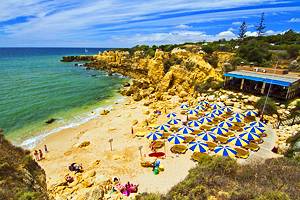
More Destinations and Attractions
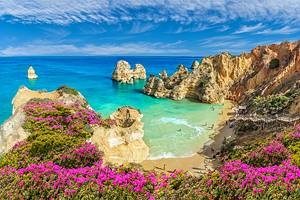
Portugal Maps
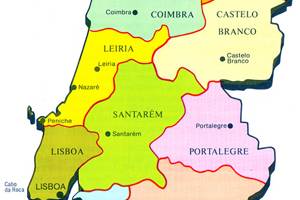

Enjoy fast, free delivery, exclusive deals, and award-winning movies & TV shows with Prime Try Prime and start saving today with fast, free delivery
Amazon Prime includes:
Fast, FREE Delivery is available to Prime members. To join, select "Try Amazon Prime and start saving today with Fast, FREE Delivery" below the Add to Cart button.
- Cardmembers earn 5% Back at Amazon.com with a Prime Credit Card.
- Unlimited Free Two-Day Delivery
- Streaming of thousands of movies and TV shows with limited ads on Prime Video.
- A Kindle book to borrow for free each month - with no due dates
- Listen to over 2 million songs and hundreds of playlists
- Unlimited photo storage with anywhere access
Important: Your credit card will NOT be charged when you start your free trial or if you cancel during the trial period. If you're happy with Amazon Prime, do nothing. At the end of the free trial, your membership will automatically upgrade to a monthly membership.

Download the free Kindle app and start reading Kindle books instantly on your smartphone, tablet, or computer - no Kindle device required .
Read instantly on your browser with Kindle for Web.
Using your mobile phone camera - scan the code below and download the Kindle app.

Image Unavailable

- To view this video download Flash Player

Lisbon Travel Guide 2024: Exploring Portugal's Neighborhoods, Festivals, Local Cuisine, and Must-See Attractions Paperback – June 3, 2024
Purchase options and add-ons, lisbon travel guide 2024.
- Outdoor Adventures: Experience the excitement of exploring Lisbon's stunning landscapes, whether hiking through scenic trails or finding picturesque coastal spots.
- Ideal Time to Visit: Find out the best season to visit Lisbon for perfect weather and cultural events.
- Getting Around: Navigate Lisbon like a pro with expert tips on using local transportation choices such as trams, buses, and metro.
- Must-See Attractions and Activities: Discover both hidden treasures and famous sites, from the iconic Belém Tower to the lively markets of Alfama.
- Budget-Friendly Tips: Stretch your travel budget with savvy tips on experiencing Lisbon's attractions without breaking the bank.
- Accommodation Choices: Select the right accommodation for your stay, whether it's a boutique hotel in the heart of the city or a cozy guesthouse in a charming neighborhood.
- Travel Advisories and Safety Measures: Stay informed and secure with useful tips for travelers, including health precautions and cultural etiquette.
- Culinary Delights: Treat your taste buds to a culinary adventure through Lisbon's diverse cuisine, from savory seafood dishes to delectable pastries.
- Day Trips and Excursions: Venture beyond the main sites with unforgettable day trips to historic Sintra, stunning Cascais, and tranquil botanical gardens.
- Print length 139 pages
- Language English
- Publication date June 3, 2024
- Dimensions 6 x 0.32 x 9 inches
- ISBN-13 979-8327512139
- See all details

Product details
- ASIN : B0D64FTTMR
- Publisher : Independently published (June 3, 2024)
- Language : English
- Paperback : 139 pages
- ISBN-13 : 979-8327512139
- Item Weight : 9.4 ounces
- Dimensions : 6 x 0.32 x 9 inches
Customer reviews
Customer Reviews, including Product Star Ratings help customers to learn more about the product and decide whether it is the right product for them.
To calculate the overall star rating and percentage breakdown by star, we don’t use a simple average. Instead, our system considers things like how recent a review is and if the reviewer bought the item on Amazon. It also analyzed reviews to verify trustworthiness.
No customer reviews
- Amazon Newsletter
- About Amazon
- Accessibility
- Sustainability
- Press Center
- Investor Relations
- Amazon Devices
- Amazon Science
- Sell on Amazon
- Sell apps on Amazon
- Supply to Amazon
- Protect & Build Your Brand
- Become an Affiliate
- Become a Delivery Driver
- Start a Package Delivery Business
- Advertise Your Products
- Self-Publish with Us
- Become an Amazon Hub Partner
- › See More Ways to Make Money
- Amazon Visa
- Amazon Store Card
- Amazon Secured Card
- Amazon Business Card
- Shop with Points
- Credit Card Marketplace
- Reload Your Balance
- Amazon Currency Converter
- Your Account
- Your Orders
- Shipping Rates & Policies
- Amazon Prime
- Returns & Replacements
- Manage Your Content and Devices
- Recalls and Product Safety Alerts
- Conditions of Use
- Privacy Notice
- Consumer Health Data Privacy Disclosure
- Your Ads Privacy Choices
Explore 4 summer destinations where locals travel in Portugal

May 27, 2024 • 6 min read

Portugal's Vila Nova de Milfontes is a quiter alternative to the Algarve © Shutterstock
Small, beautiful and historic, Portugal is a favorite for travelers from around the globe thanks to its fabulous beaches, exciting cities, rich history and mild climate. Yet such popularity can bring throngs to some of the country’s better-known spots. This is why we’ve asked four of our Portugal-based writers to recommend places they love to go for a break – places you might never have heard of before.
Escape the crowds at these off-the-radar places in Portugal, recommended by our local experts.
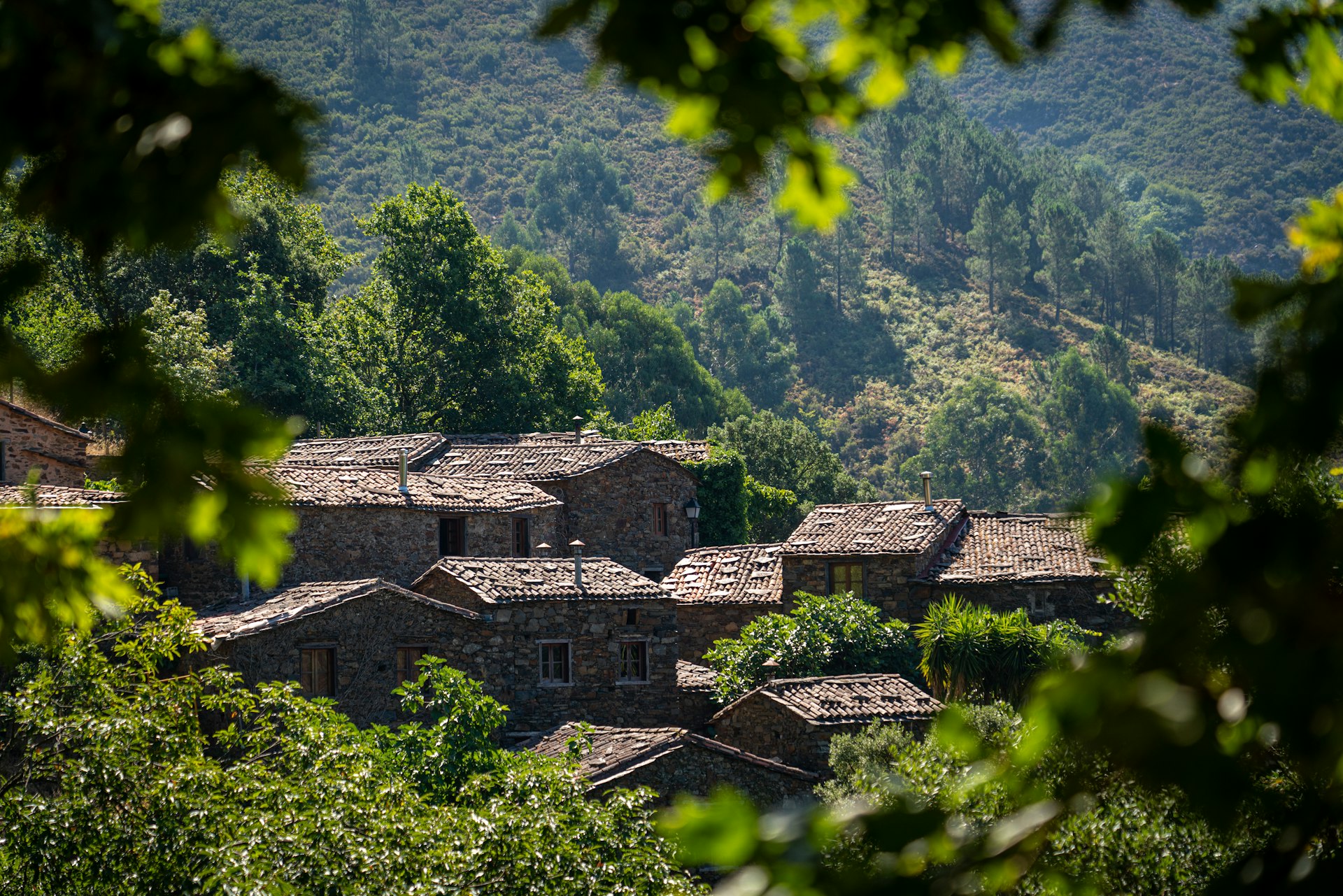
1. Serra da Lousã
Daniel James Clarke used to frequently holiday in the Algarve, until one day he decided to stay and call the southern coast home.
Why Serra da Lousã?
When summer brings crowds to the coast , I’m forever drawn to Portugal’s lesser-visited interior. The Serra da Lousã, in the hinterlands of the historic Beiras region , is a bolthole blend of near-forgotten aldeias do xisto ( schist villages), tranquil hiking trails and creative rural hideaways.
Around 30 minutes from Coimbra , the town of Lousã is the mountain range’s gateway where HI Hostel Lousã ’s modern private rooms are my affordable go-to. For a genuine retreat, however, stay in a renovated rock home at one of the once-abandoned villages, such as 17th-century Talasnal or Candal.
Must-do activities
By night, the Milky Way dazzles, especially in the Dark Sky Reserve of Pampilhosa da Serra, slightly further inland.
Make a reservation at O Burgo or Villa Lausana to enjoy typically hearty dishes such as chanfana (a clay-pot lamb stew), best paired with the local mineral-rich red wines produced from the regional grape, baga .
In fall, with a copper canopy, the serra is equally enchanting, while winter’s occasional sprinkling of snow is perfect for evenings by the fireplace. No matter when you visit, you’ll find a Portugal that time seemingly forgot.
Serra da Lousã tips
The assiduously restored hamlet of Cerdeira, reborn as Cerdeira Home for Creativity , is now an artist’s retreat, offering workshops and idea-generating spaces for those eager to harness nature’s inspiration. What a place it is to disconnect. A soundtrack of birdsong and the much-welcome river beaches at Cabril do Ceira gorge or Praia Fluvial Senhora da Piedade – crowned by Lousã Castle, an 11th-century monument – provide daytime escapes.

Sandra Henriques was born in Portugal’s Azores islands and has called Lisbon home for 20+ years.
Why Corvo? One of the nine islands of the Azores , an archipelago some 1100 miles off the coast of Portugal, this 6.8 sq mile lump of land with under 400 inhabitants remains well off-the-beaten track. Most of the Azores islands have grown in in popularity over the last decade but the minute you get off the plane on Corvo the peacefulness of this village-like island washes over you (you’ll barely feel the jet lag).
Vila do Corvo, the only municipality on the island, is a minute cluster of houses and narrow streets on cliffs overlooking the ocean, with everything within walking distance. Its main natural attraction – Caldeirão , the lagoon on the the crater of the volcano that formed the island – is a two-hour, 6km/3.7-mile hike uphill. To learn about local history and heritage, visit the museum Casa do Tempo and the old animal-powered grain mill Atafona do Lourenço.
This is where I go to release, recharge and enjoy the outdoors and small-town living. Forget planning or a packed calendar of activities: instead, prepare for days of lazing around, mingling with the locals and dividing your time between mornings hiking and afternoons at the beach.Whatever you plan, rolling with the punches when the weather doesn’t agree with what you had in mind is essential.
Short-term rentals are available on the island, though I recommend staying at the family-owned Hotel Comodoro . This two-star guesthouse offers the comfort of staying with relatives, including a complimentary homemade breakfast. The only restaurant on the island, Restaurante Caldeirão is right next to the airport and your go-to spot for lunch or dinner with a view. For drinks, casual meals, and laidback chit-chat with the locals, head to BBC – Caffé & Lounge .

3. Trás-os-Montes
Austin Bush is a writer and photographer based in Lisbon.
Why Trás-os-Montes?
I’ll almost always opt for mountains over the beach – and in Portugal, my favorite destination for the former is Trás-os-Montes . Portugal’s northernmost region, “Behind the Mountains” is a relative term: don’t come expecting towering summits or ski resorts (although the area can get snow in the winter), but rather a remote-feeling, rocky area of charming villages and protected natural areas.
Trás-os-Montes is a fascinating region for food. When I’m up there, my guide is Tabernas do Alto Tâmega, a network of 15 eateries across the region. Expect massive, hearty dishes cooked over wood-burning fires; smoked meats; and home-style hospitality. My favorite eatery in the network might be Casa de Souto Velho , a fantastic restaurant in the eastern part of the region where just about every ingredient is grown, raised or produced in-house.
This sense of time travel is also possible in Pitões das Junias, yet another ancient granite village, this one positioned at the edge of the Parque Nacional da Peneda-Gerês , a protected natural area that spans Portugal and Spain .
A short walk from the village takes in a beautiful landscape that combines an abandoned 12th-century church , jagged granite outcroppings, old-growth oak forests, rushing streams and a waterfall .
Trás-os-Montes tips
The ideal way to approach the region is to rent a car from Porto , only a two-hour drive away. A highlight of Trás-os-Montes is its granite villages, where you feel that you are not only traversing geography but also time. Vilarinho Seco in Boticas, for example, is one of Portugal’s best-preserved granite villages, a place where it feels like the clock stopped somewhere around the year 1500. Locals here still raise long-horned Barrosã cattle, who sleep in ground-floor pens beneath the two-story stone homes.
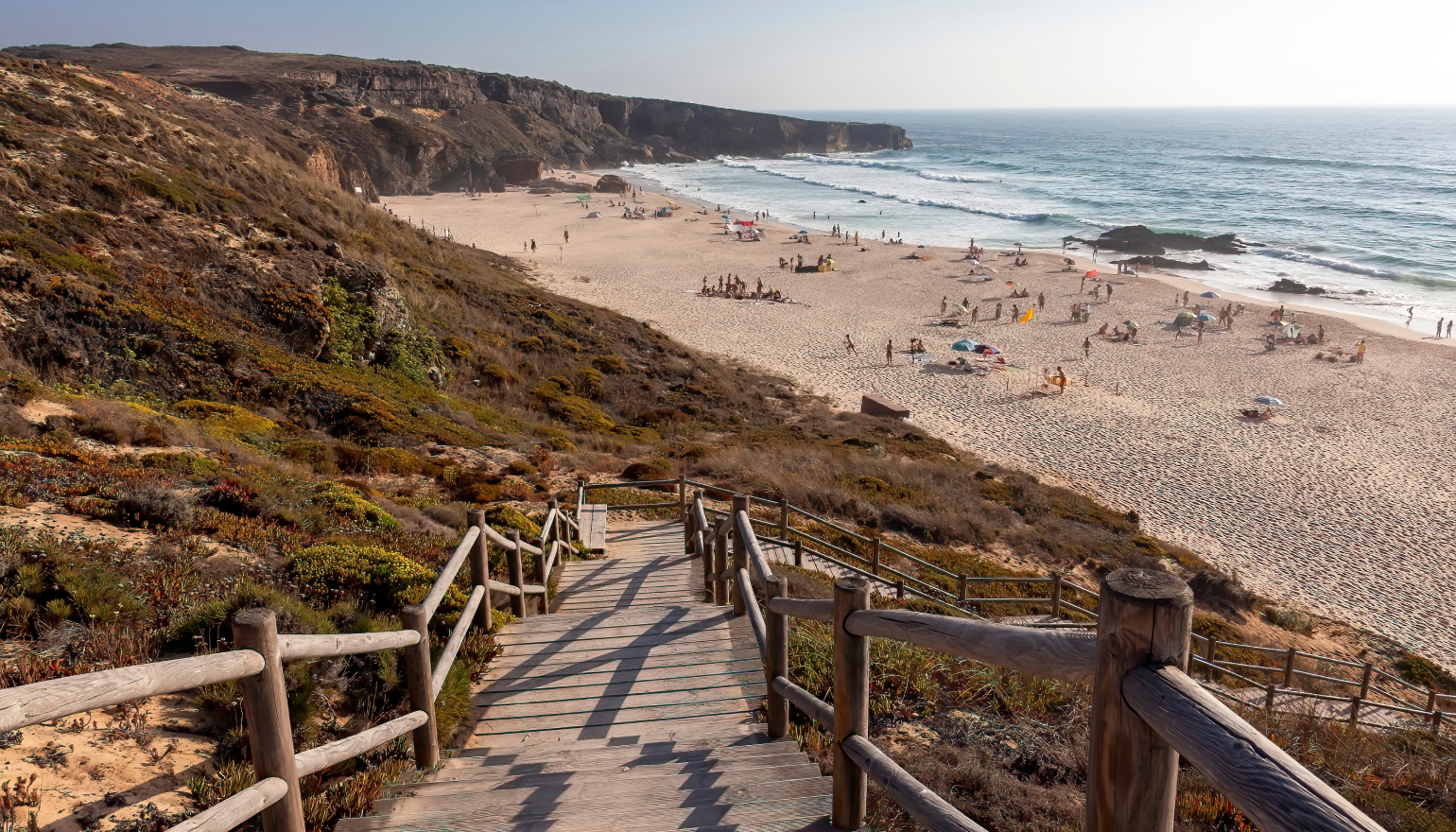
4. Vila Nova de Milfontes
Joana Taborda grew up in Lisbon and now splits her time between the capital and Madeira .
Why Vila Nova de Milfontes?
The southern coast has always been a favorite holiday spot for Portuguese families. Most end up in the Algarve – but lately, many are switching it up for the Alentejo ’s quieter sands.
When I was younger, I spent my summers camping near the beaches of Vila Nova de Milfontes in southern Portugal, and I often return there. It’s one of the many coastal towns in the Alentejo , a region of sprawling with wild beaches and scenic hikes like the Fishermen’s Trail. This famous walking route crosses a natural park (no high-rise hotels here) and takes you along steep cliffs with ocean views all the way through.
I used to stay at a camping site just above Praia do Malhão , walking down every morning to the beach for a full day of swimming and the occasional surf lesson. These days, I’ve been sticking closer to town and its 16th-century castle. I enjoy grabbing my breakfast croissant from Mabi and catching the sunset from the dunes behind Praia do Farol before ending the night with a cocktail.
Vila Nova de Milfontes tips
There's no bad time to visit. Late spring and early September are beautiful and calm, but even at the height of summer, Vila Nova de Milfontes offers a peaceful seaside vacation away from the crowds.
This article was first published Jul 26, 2023 and updated May 27, 2024.
Explore related stories

Destination Practicalities
May 30, 2024 • 10 min read
Our first-time guide to Palma de Mallorca gives you a taste of what’s here, but you’re sure to find treasures of your own, too.

May 23, 2024 • 17 min read

May 21, 2024 • 11 min read

May 20, 2024 • 5 min read

May 3, 2024 • 6 min read
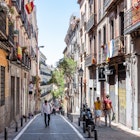
Apr 30, 2024 • 4 min read

Apr 24, 2024 • 5 min read

Apr 19, 2024 • 10 min read

Apr 15, 2024 • 10 min read

Apr 4, 2024 • 4 min read
- How to Tie a Tie
- Best Coffee Beans
- How to Shape a Beard
- Best Sweaters for Men
- Most Expensive Cognac
- Monos vs Away Luggage
- Best Luxury Hotel Chains
- Fastest Cars in the World
- Ernest Hemingway Books
- What Does CBD Feel Like?
- Canada Goose Alternatives
- Fastest Motorcycles in the World
This is the best time to visit Portugal
When should you book your vacation.

Are you thinking about planning a trip to Portugal ? Known for its stunning coastline, charming cities, and delectable foods, Portugal is a popular year-round vacation destination . However, the best time to visit Portugal depends on what you are looking for. Whether you’re a budget traveler seeking the best deals, a beach lover chasing the sun, or an adventurer eager to immerse yourself in local festivals and events, timing your trip right can make all of the difference. From the hot temperatures of summer to the festive charm of winter, let’s discover the best time for you to head out on the perfect Portuguese adventure.
The best time to visit for good weather
Best time to visit to avoid crowds, best time to visit for festivals/events, best time to visit for a budget trip, best time to visit for outdoor activities, when should you avoid portugal.
For travelers seeking the best weather, summer (June to August) is the ideal time to visit Portugal. This season boasts the warmest and sunniest days, with daytime temperatures often reaching the high 80sºF and minimal rainfall. This time is perfect for beach vacations, particularly in the Algarve region, where you’ll find crystal clear waters and golden sands.
The sea temperatures are also ideal for swimming during this time, making it a haven for sun-seekers and water sports enthusiasts. However, be prepared for intense heat, especially inland, and expect popular destinations to be very crowded as this is peak tourist season.
- These are the 7 best golf courses in the world
- Olympian Tom Daley shares his top European travel spots for sports enthusiasts
- This luxury cruise is perfect for Aston Martin, F1 fans
To avoid crowds, the best time to visit Portugal is during the shoulder seasons of spring (March to May) and fall (September to November). During these periods, the number of tourists visiting the country is significantly lower compared to the busy summer months, leading to lower prices and a more relaxed experience.
Spring is a particularly wonderful time to visit as the flowers begin to bloom and add gorgeous colors to the landscape. In the fall, you can enjoy the excitement of wine harvest season, making this a wonderful time to visit Portugal’s renowned wineries. The weather during both of these seasons is mild and pleasant, making it an ideal time for outdoor activities like sightseeing and hiking without the intense summer heat. The beaches are also much quieter, providing the perfect setting for relaxation.
For those drawn to festivals and cultural events, the best time to visit Portugal varies throughout the year to match the diverse calendar of celebrations. Late winter and early spring bring the lively Carnaval festivities, which are celebrated through colorful parades and street parties across the entire country. Holy Week (Easter) in March or April offers religious processions and ceremonies, especially poignant in cities like Braga.
You’ll also find several festivities during the summer months, including St. John’s Eve in Porto, known for its amazing firework displays, as well as the Madeira Flower Festival and Portugal Day. In the fall, the Douro Valley comes alive with harvest festivals, where you can partake in traditional grape stomping and taste local wines. Even winter has its charm, with Christmas markets offering festive cheer without the summer crowds.
If you are traveling on a budget, you may want to visit Portugal during the winter months (December to February). As the low season with the fewest tourists, it offers the most affordable rates on hotels, flights, and activities. While the cooler temperatures and increased chance of rain are downsides, and some attractions may be closed, the weather is still relatively mild, especially in the Algarve region.
If you are visiting in January or February, you can take part in a few of the country’s traditions. Dia de Reis (Three Kings’ Day), is on January 6. On this day, carolers go from door to door to celebrate the time when Portuguese children receive gifts (from the three kings rather than Santa).
For outdoor lovers, the best time to visit Portugal is during spring (March to May) and fall (September to November). These seasons offer ideal conditions for activities like hiking and cycling, with mild, pleasant temperatures that are perfect for exploring scenic landscapes. For hikers, the Peneda-Ger ê s National Park is a must-visit, while the Azores islands are perfect for whale watching and other water activities.
While summer can be too hot for strenuous outdoor activities and winter often brings heavy rain and shorter daylight hours, fall stands out for water activities like surfing in Nazaré, thanks to the bigger waves that attract surfers from all over the world.
The bottom line is that the best time to visit Portugal largely depends on your preferences. If you want to enjoy the beaches without the crowds, it’s best to avoid July and August. Inland cities like Lisbon can be very hot during the summer, making spring and fall more comfortable for exploring the city. Northern regions like Porto tend to be rainier in the winter months, whereas beach destinations are quieter from November to March, though the water can be cooler. Regardless of when you choose to visit, Portugal guarantees an incredible experience at any time of the year.
Editors' Recommendations
- What to do in Nashville: Don’t miss out on these incredible activities
- These are the cities with the most Michelin star restaurants for food lovers
- How to check for bed bugs: Every traveler needs to know this
- Travel tips: Why you need to set a flight alert even after you book a flight
- Travel report says this surprising spot is where you can find the bluest water

As I watched footage of the recent Monaco Grand Prix, I let myself dream. Seeing in-car feeds of the world’s finest drivers and machines negotiate the city streets, I wondered — what would it be like in the driver’s seat? Sitting in a carbon monocoque chassis, a space-age hybrid powertrain behind me, the stunning levels of acceleration and grip would be more like flying an F-15 than driving a car. Add in the glitz and glamour of F1’s most notable venue, and it would be a party for the senses.
I imagine many Formula 1 fans share in my fantasy. But becoming an F1 driver is a lifetime pursuit, with few making the grade — only 11 teams and 22 drivers compete for the trophy week after week. Today, the competition’s so tight that less than a second often separates the top ten in qualifying. It’s a thrilling spectacle.
Perfect weather, beautiful beaches, and endless adventure – that's the essence of San Diego. This Southern California city has long been a favorite destination for travelers who are looking for a taste of the laidback West Coast lifestyle. And for those looking to explore the city, we put together a list of the best things to do in San Diego, according to a local. 1. See the Carlsbad Flower Fields
Spring in San Diego just wouldn't be complete without a visit to the beautiful Carlsbad Flower Fields. This attraction spans nearly 50 acres and features a stunning display of ranunculus flowers blanketing the rolling hills in a rainbow of colors. It's a photographer's dream come true! The blooming season typically runs from early March through early May, so plan your visit accordingly. 2. Take a trip to the Del Mar Horse Races
Are you thinking about visiting the south of France? Southern France, also known in French as le Midi, consists of the regions of France that border the Atlantic Ocean, Spain, and the Mediterranean Sea. From the beautiful beaches of the French Riviera to the historic towns nestled in Provence, this region offers a diverse array of experiences that cater to every type of traveler. If this area is calling your name, then consider these south of France cities and towns for your next getaway. Nice
Nice is nestled on the French Riviera and boasts stunning views of the Mediterranean Sea. The city is both beautiful and historic, with several cultural gems located around the city. Whether you want to relax on a pristine beach or take a walk down charming cobblestone streets, Nice has something for you. Things to do
36 Hours in Porto, Portugal
By Seth Sherwood May 30, 2024
- Share full article

By Seth Sherwood Photographs by Matilde Viegas
Seth Sherwood, based in Paris, is a longtime contributor to the Travel section who has been writing about Portugal since 2006.
First Lisbon; now Porto. The whole world seems to have fallen in love lately with the nearby beaches, old churches, seafood-heavy cuisine and historical UNESCO-listed streets of Portugal’s second-largest city, where the number of tourists has doubled in a decade. (The circus-like atmosphere along the Douro riverfront and outside Livraria Lello , a neo-Gothic 19th-century bookstore, are only the most obvious signs.) And the home of port wine is keeping pace with a slew of new offerings. Recent years have seen the opening, upgrading or expansion of museums , art centers , food markets , food halls and hotels aplenty — along with the inauguration of World of Wine, a dining and entertainment district .
Recommendations
- Cozinha das Flores , a classy nouveau Portuguese restaurant led by one of the country’s most successful international chefs, features design elements from a Pritzker Prize-winning architect, the Porto-area native Álvaro Siza Vieira.
- The Serralves Museum , a collection of contemporary art on the park-like grounds of the Serralves Foundation — a decades-old private institution that works closely with the Portuguese government — has a new wing by Mr. Siza.
- Mercado do Bolhão , a 19th-century food market, reopened two years ago after a total renovation.
- The World of Wine district, like a theme park for epicureans, features several food- and drink-themed museums, a wine school, and numerous restaurants and bars.
- Jardins do Palácio de Cristal , a 19th-century park, features fountains, ponds, peacocks, an art museum and views of the Douro River.
- The exterior of Capela das Almas church is covered with blue-and-white azulejos (painted and glazed ceramic tiles, brought to Portugal and Spain during the Middle Ages from Moorish North Africa) depicting biblical scenes.
- A Pérola do Bolhão is a fine-food boutique that sports an authentic Art Nouveau exterior.
- Café Majestic , opened in the 1920s, houses a soaring Art Nouveau dining room and serves everything from pastries to pastas to steaks.
- Igreja de Santo Ildefonso , an 18th-century church, features a facade covered with azulejo tiles.
- Batalha Centro de Cinema , an Art Deco movie theater, was renovated and reopened in 2022 with a bookshop and bar.
- Igreja de São Francisco is a church that dazzles with its gilded Baroque woodwork.
- Labels of Tomorrow is a two-level emporium with contemporary unisex fashion by Portuguese and international designers.
- Coração Alecrim specializes in vintage clothing for women and has its own retro-inspired line.
- Musubu Porto , a Japanese vegetarian cafe, operates from a niche in the back of Coração Alecrim.
- Apego jazzes up Portuguese cuisine with French ingredients and techniques.
- Fiasco serves creative cocktails and sells a wide range of vinyl albums.
- Terraplana Café channels an old-time urban saloon and has a backyard where you can enjoy the bar’s craft beers and signature cocktails.
- Capela Incomum is a wine bar inside a former 19th-century chapel.
- Genuíno is a lively bar that draws oenophiles for its natural wines from local vineyards.
- Design savvy and art-filled, the Rebello opened last year in Vila Nova de Gaia and offers knockout views of Porto, across the Douro River, from many of its 103 apartment-style rooms. A roof bar, pool, spa, restaurant and cafe are also in the converted 19th-century stone building, which is near the Ferreira port-wine house. Rooms from around 450 euros, or about $488, in June.
- The six minimalist white rooms of the Babel guesthouse, tastefully furnished with vintage and modern furniture, offer an excellent city-center base. Its lively downstairs restaurant serves local Portuguese ingredients with splashes of flavor from North Africa, the Middle East and beyond. Rooms in June start around €138.
- Roughly a mile east of the city center, a drab residential street hides Outsite Porto-Mouco , a modernist white building with 12 apartments, a coworking cafe, a library, a pool and grassy grounds. Apartments from around €123 in June.
- For short-term rentals among the central districts, Ribeira is rich in historical buildings and lies closest to the picturesque riverside, while Clérigos abounds with dining and nightlife.
- An efficient bus system and ever-expanding modern metro network cover much of Porto and surrounding areas, from the airport to the city center to the nearby coastal towns. An Andante card, available in metro stations, allows travel by bus or train in central Porto for €1.40 per ride. (Zones farther from the center have higher fares .) A three-day card for the entire bus and train network costs €16. Taxis are abundant and fairly cheap, as are trips with the ride-hailing app Uber.

Jardins do Palácio de Cristal
Gazing at the bridges and passing ships on the Douro River is a favorite Porto pastime. For sublime views far from the dense crush of the waterfront walkways, the Jardins do Palácio de Cristal , a manicured 19th-century park, is a relaxed, bucolic alternative and a favorite with locals. In addition to tree-shaded lookout points, the park includes ponds, fountains, lawns, flower beds and rotating art exhibitions in the free, multilevel Galeria Municipal do Porto . As you stroll, keep your ears open for the calls of the park's resident ducks and peacocks.

Cozinha das Flores
After decades abroad, cooking alongside international legends (Wolfgang Puck, Ferran Adrià) and helming kitchens of beloved London restaurants (Viajante, Chiltern Firehouse), the chef Nuno Mendes has planted his flag once again in his native land, overseeing the precise neo-Portuguese cuisine at Cozinha das Flores , a year-old restaurant along the pedestrianized Rua das Flores. Try tasty tiny snacks (crunchy sourdough crackers with razor clams), elegant comfort food (Azores squid sliced into pasta-like strands with a zesty stew of chickpeas and cod tripe) and unusual desserts (ice cream, made from and resembling egg yolk, on ribbons of sugary, fried egg-yolk, sprinkled with ham shavings). Note the abstract drawings on the pink-and-green mosaic wall: the Pritzker Prize-winning architect (and Porto-region native) Álvaro Siza Vieira contributed both. Dinner for two costs about 120 euros, or about $130, without drinks.

If you’re keen to avoid thronged streets and blasting music — hallmarks of the Mardi Gras-like Clérigos nightlife district — head east to Bomfim, a laid-back bohemian neighborhood of art galleries and indie boutiques. Sporting red walls and red banquettes, Fiasco is both Porto’s sultriest new cocktail bar and a mecca for vinyl record collectors, thanks to numerous racks of rock, rap, indie, electro, world-beat and other albums for sale. A Lusco Fusco Groove cocktail (Ysabel Regina brandy, Campari, fortified Portuguese wine and coffee) runs you 9 euros. Down the street, Terraplana Café channels an old-time urban saloon (tin ceiling, checkerboard floor) while dispensing original cocktails. The back garden is perfect for a Tropicalia cocktail: ruby port, sparkling rosé and guava-hibiscus syrup, brightened with salt (€11).

The Super Bock Arena, also known as Pavilhão Rosa Mota, seen from the Jardins do Palácio de Cristal.

Álvaro Siza Wing
Now 90 years old, Mr. Siza, the architect whose touches you spotted at Cozinha das Flores, has been keeping busy. This year, the Serralves Museum — a world-class contemporary art museum that he designed in the 1990s — added a splashy new wing that he also designed. Known as the Álvaro Siza Wing , the jagged white addition displays plans and models from the architect’s long international career, as well as works from the permanent collection, including strange fairy tale-like paintings from Paula Rego and abstract lithographs by Gerhard Richter. An apocalyptic installation by the Thai artist Korakrit Arunanondchai and a haunted playerless piano from the French artist Philippe Parreno are particularly potent. Admission to all buildings and grounds is €24.

Mercado Bolhão
Bearded and bespectacled, Joaquim Lucas resembles a scholar as he carefully slices presunto (€65 a kilo) from aged hocks of Alentejo ham. His stand, Charcutaria Princesa , is one of dozens inside Mercado Bolhão , a recently upgraded 19th-century covered food market in the city center that reopened in 2022. The smorgasbord also includes spice dealers, fruit sellers, cheese specialists, wine stands and more. Raw surf-and-turf comes courtesy of Casa das Ostras — which cracks open sea urchin (€5 each) and shucks Algarve oysters (three for €7) — and Talho do Toninho , a butcher stall serving toast slices topped with beef or deer tartare (€1.50). For dessert, Doçaria Portuguesa does a chocolate-rimmed pastel de nata (€2), the classic Portuguese egg tart. For a sit-down meal, several restaurants occupy the upper level. And a short walk south is a new food hall from Time Out, opened in May.
Strolling nearby Rua Santa Catarina, a car-free shopping boulevard, provides both a digestive walk and an architectural exhibition. Start at Capela das Almas , an 18th-century church covered with blue-and-white azulejos (added in 1929) depicting divine episodes filled with saints, apostles, magi and cherubs. Heading south, you can admire the Art Nouveau façade of A Perola do Bolhão , a fine-food shop dating to 1917, and the grand Belle Epoque interior of Café Majestic , which opened in 1921. Finally, stop in Praça da Batalha, home of the azulejo-covered Igreja de Santo Ildefonso , an 18th-century church, and the Batalha Centro de Cinema , a 1940s Art Deco movie theater that was restored and reopened in 2022. In addition to an eclectic roster of films, the center offers a library, bookshop and bar.

Coração Alecrim
Your Saturday night wardrobe awaits inside Labels of Tomorrow , a two-level international fashion emporium a few blocks north of Livraria Lello in the Cedofeita neighborhood. Portuguese labels take center stage, from button-up blue maritime jackets for men from Sanjo (€149.90) to gauzy takes on 1950s ladies’ bowling shirts (€130) by Mustique. After your fitting-room adventures, a terrace cafe-restaurant and a backyard bar provide refreshment for shopping fatigue — or fuel for another spree. If you prefer threads with history, the nearby Coração Alecrim shop sells vintage clothing — fur coats (€70), sheer paisley dresses (€40) — and its own line of retro-inspired jackets, shirts and more. A Japanese vegetarian cafe, Musubu Porto , is tucked in back.
If France is too far away, you can enjoy Gallic flavors at Apego , a homey little restaurant in a quiet street north of Trinidade train station. Global music echoes off the high stone walls and yellow banquettes as the Franco-Portuguese chef Aurora Goy reinvents local cuisine with dishes like a savory tarte tatin (which replaces apples with eggs and mushrooms) and a bed of pomme paillasson — a crispy-fried cake of shredded potato — topped with mackerel and leeks in white-wine sauce. Desserts include a French-style sablé biscuit with pear and custard-like sabayon incorporating Madeira wine. A three-course dinner for two, without wine, costs around €90.

Gallery district by day, the zone around Rua Miguel Bombarda morphs into a destination for wine lovers as night falls. Occupying an elegantly repurposed 19th-century chapel, Capela Incomum allows acolytes of the grape to sip vintages likes Lapa dos Gaivões (€4.50 a glass) — a smooth red blend from the Alentejo region — in its burgundy-painted lounge or tree-shaded front yard. A block away, Genuíno is a lively Brazilian-owned restaurant and natural-wine bar outfitted with a disco ball, playful wine-themed posters, and vintage tables and chairs. Most wines come from small regional producers, including an agreeably dry, concrete-aged orange wine from Folias de Baco (€5.50 a glass).

A view over the museums in the World of Wine (WOW) district, with the Dom Luís I Bridge in the distance.

Igreja de São Francisco
By now you have noticed: Old churches beckon from nearly every corner. If you venture inside only one, Igreja de São Francisco pays off in gold — literally. Erected in the medieval period, the church’s soaring stony interior was enriched in the 1700s with talha dourada — elaborately carved and gilded wood. The effect is a dazzling symphony of radiant decorative themes — spiral-twist columns, swirls, floral patterns, coats of arms, cherubs and disembodied faces that burst from every surface. Downstairs, in the crypt, a transparent floor panel reveals a sea of white bones lurking below ground. Admission €10.

The Chocolate Story museum in the WOW district.
Did you know that the Chinese village of Jiahu might have produced the world’s first wine, several millennia before Christ? That Muscat from Alexandria was Cleopatra's favorite wine? That the signing of the Declaration of Independence was celebrated with a toast of Madeira? Educational nuggets fill the Bridge Collection (entry €25), a museum with a staggering array of historical wine information and antique drinking vessels in the World of Wine (WOW) entertainment district. Opened in 2020, WOW encompasses several museums — including ones devoted to chocolate, cork and rosé wine — as well as boutiques, a wine school, and numerous restaurants and bars. Root & Vine serves up a classic international brunch — eggs on toast, salmon bagels, waffles — and panoramic views of the city for a final snapshot. Museum admission €25 each.
Have a weekend to explore a destination? We’ve got the perfect travel itinerary.
Colorado Springs: Colorado’s second-largest city, which brims with outdoor activities , is enticing visitors with a new museum and revamped hotels.
Minneapolis: Springtime is best for exploring this Midwestern city’s lakeside trails, robust arts scene and top-notch restaurants .
Maui: The beauty and hospitality of this Hawaiian island, still recovering from last year’s wildfires, remain as vibrant as ever .
Toronto: Savor the diversity of this lakefront city through its hidden bars, small-but-fascinating museums and vibrant restaurants .
Cape Town: Take a food and storytelling tour, cruise one of the world’s most beautiful coastal drives and see contemporary African art in this city with stunning views in every direction .
Advertisement
The weather in Faro in October
Book your individual trip , stress-free with local travel experts
Select Month
- roughguides.com
- faro-weather-october-travel-tips
Plan your tailor-made trip with a local expert
Book securely with money-back guarantee
Travel stress-free with local assistance and 24/7 support

written by Dre Roelandt
updated 03.06.2024
As the summer crowds begin to dwindle, October in Faro takes on a more relaxed atmosphere . The climate transitions from the scorching summer heat to more temperate, with just the right amount of warmth lingering in the air. As you plan your autumn getaway to this charming Portuguese gem, it's natural to wonder what to expect: here’s our guide to the weather in Faro in October.
- The weather in Faro in October at a glance
- Faro in October typically enjoys warm weather .
- Temperatures range from 16°C to 24°C (61°F to 75°F) .
- October can still see some rainfall in Faro, though it's usually sporadic and not as heavy as in the winter months.
- October marks the transition from peak tourist season to the shoulder season in Faro. While there may still be some crowds, they tend to be smaller compared to the summer months.
Is October a good time to visit Faro?
Average temperatures in faro in october, what about the crowd & cost, unforgettable and customisable portugal itineraries, what to do and see in faro in october, travel ideas for portugal, created by local experts.

7 days / from 3090 USD
Iberian Blend - Porto and Galicia
Neighbour countries - Portugal and Spain, different and similar at the same time, will surprise you with hospitality and loveliness. This itinerary includes the route of the Northwest part of Iberian Peninsula and offers you to meet beautiful Porto and stunning Vigo in Galicia/Spain.
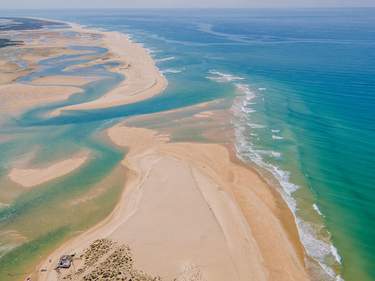
7 days / from 3047 USD
The Real Algarvian Experience
Experience and discover the real Algarve – taste local produce, drinks and traditional dishes, visit heritage sites and participate in culinary activities. If you are passionate about the people’s culture and gastronomy and want to learn more, this itinerary is for you.

11 days / from 1744 USD
A self drive to Portugal's North and Center
Starting in fascinating Lisbon, this trip allows you to discover Portugal both on your own as well as with guided tours. Driving further up north you'll explore Coimbra and Porto before heading to the Douro Valley and Alentejo.
October can be a great month to visit Faro, but there are a few things to keep in mind. As summer gradually fades into autumn, October in Faro offers a gentle transition in weather. While days still boast ample sunshine, you’ll want to be prepared for a higher chance of rain compared to the previous months. On average, Faro sees around 66mm of rainfall during October, marking the beginning of the wetter season.
October falls within the shoulder season in Faro. While it's not as bustling as peak summer, you'll still encounter a fair share of tourists, especially in the first half of the month. It's wise to secure bookings for popular attractions and accommodations ahead of time to avoid any disappointments.
October still allows for swimming, although the water temperature starts to dip, which may deter those accustomed to warmer waters. It's a refreshing experience for some, but others might prefer to stick to sunbathing on the shore.
Overall, October can be a delightful time to visit Faro for travelers seeking milder temperatures and a more laid-back vibe. Just be prepared for occasional rain showers and cooler seas. If you're after lively beach activities and a bustling scene, you might find October a tad subdued compared to the summer months.

Faro with Se Cathedral © Shutterstock
As the season shifts from warm autumn to cooler winter weather, you'll experience daytime temperatures ranging from 18°C to 23°C (64°F to 73°F). While it's a step down from the scorching summer highs, the weather in Faro in October is still pretty mild.
As the sun sets, you can expect nighttime temperatures to dip to around 13°C to 17°C (55°F to 63°F). A light jacket or sweater should suffice for your evening explorations.
The sea temperature gradually cools down, averaging around 19°C to 21°C (66°F to 70°F). For most, this should be still warm enough for a refreshing swim if you're not daunted by slightly cooler waters.
You might also want more detail on when to go to Portugal around the year.
In October, Faro experiences moderate tourist traffic, thanks to its pleasant weather, making it a popular time to visit. Crowds are generally easy to navigate, allowing you to explore the city and its attractions comfortably.
Costs in October can vary, as it falls within the shoulder season between the peak summer months and the quieter winter period. While accommodation prices may still lean towards the higher side, especially in tourist hotspots, you'll often find deals and discounts compared to the peak summer rates. Overall, October presents good value.
If you're someone who prefers warmer temperatures and doesn't mind a bit more hustle and bustle, consider visiting during late spring or early summer, like May or June. During these months, temperatures soar, and outdoor activities are in full swing, resulting in slightly higher tourist numbers but still manageable crowds compared to peak season.

Praia fe Faro © Shutterstock
Save time on research and let us handle the planning and booking for you. Our tailor-made trip service allows you to concentrate on enjoying your holiday. Crafted by local travel experts , our trips are fully customisable to suit your preferences.
- South Portugal (11 days): Drive from Lisbon to explore Sintra & Cascais before venturing to Alentejo, a region rich in history and unique cuisine. End your journey with beach days in Tavira on the Algarve coast.
- The wines of Portugal (9 days): Explore Portugal's top wine regions, including the Douro Valley, and enjoy tastings of local labels.
- Portugal’s coast (11 days): Start with historic sites and wineries in Porto, then head south to Lisbon. Explore charming coastal towns, dramatic cliffs, and national parks along the way.
Explore more customisable Portugal itineraries .
The weather in the Faro in October allows for plenty to do. For more inspiration for your next trip, see our list of the best things to do in Portugal .
Visit the Bone Chapel: Capela dos Ossos
Step into the eerie yet fascinating world of the Capela dos Ossos, or the Bone Chapel, located in the Church of São Francisco. Adorned with the skeletal remains of over 1,000 monks, this macabre yet thought-provoking chapel offers a glimpse into Faro's religious and cultural history. While here you can take a guided tour to learn about the chapel's origins and significance.
Have a night out in Albufeira
Experience the vibrant nightlife of nearby Albufeira, just a short drive from Faro. This coastal town comes alive after dark, with a plethora of bars, clubs, and live music venues lining its streets. Whether you're in the mood for dancing until dawn or simply enjoying a leisurely drink by the sea, Albufeira offers entertainment options to suit every taste.

Saint Peter Church, or Igreja de São Pedro, Faro, Algarve © Shutterstock
Visit the Old Town
Take a step back in time and wander through Faro's charming Old Town. Here you can explore narrow cobblestone streets lined with whitewashed buildings adorned with colorful tiles and wrought-iron balconies. This area is known for its hidden squares, historic churches, and traditional taverns serving authentic Portuguese cuisine. Don't forget to climb the steps of the medieval Faro Cathedral for a panoramic view of the city and surrounding countryside.
Try Portuguese wines
Treat yourself to a tasting tour of Portuguese wines, renowned for their quality and diversity. There are plenty of local vineyards and wineries in the Algarve region and a sample a wide range of varietals to try, from crisp whites to robust reds and sweet fortified wines. Don’t forget to pair your wine tastings with traditional Portuguese cuisine .
See the tiles in the Paço Episcopal
Experience the beauty of Portuguese azulejos , and traditional ceramic tiles, at the Paço Episcopal in Faro. Here you can see for yourself the intricate designs and vibrant colors that adorn the walls of this historic palace, which dates back to the 16th century. From geometric patterns to intricate scenes depicting mythological figures and religious motifs, the azulejos of Paço Episcopal are worth seeing.
Visit Portugal in other months
- Best time to visit Portugal
- Weather in Portugal in May
- Weather in Portugal in July
- Weather in Portugal in October
- Weather in Portugal in March
- Weather in Portugal in August
- Weather in Portugal in January
- Weather in Portugal in November
- Weather in Portugal in February
- Weather in Portugal in December
- Weather in Portugal in April
Dre Roelandt is originally from the United States but lives and works in Berlin, Germany. Dre is a freelance writer and artist with a passion for travelling. They are an in-house Content Editor at Rough Guides.
- Travel Advice
- Travel Tips
Planning your own trip? Prepare for your trip
Use Rough Guides' trusted partners for great rates
Travel advice for Portugal
From travel safety to visa requirements, discover the best tips for traveling to Portugal
- Eating and drinking in Portugal
- How to get to Portugal
- Getting around Portugal: Transportation Tips
- Shopping tips for Portugal
- Travel Tips Portugal for planning and on the go
- 7 days in Portugal — 5 travel itineraries
Find even more inspiration for 74 here

Ready to travel and discover Portugal?
Get support from our local experts for stress-free planning & worry-free travels.
- Where to stay
- Itineraries
- Travel advice
You are using an outdated browser. Please upgrade your browser to improve your experience.
- Restaurants
- Best-of Guides
- MICHELIN Guide Ceremony
- My Favorites
- Subscribe to newsletter
- Booking partnership with OpenTable
- Booking partnership with Resy
- USA - English - USD
Please select destination / Please select travel dates
You cannot book more than 31 days
- Lowest price
- Plus Hotels
- Available Hotels
- Distinction
Portugalito : 1-1 of 1 hotels

Hacienda Bambusa
Explore michelin guide experiences.
- MICHELIN Guide Hotels
- Portugalito Hotels

Use the app to find the best restaurants and hotels everywhere
Be the first to get news and update about the michelin guide.
MICHELIN Guide selections
Michelin guide, the michelin group.
- Terms of Use
- Privacy Policy
- Legal Notice
Display settings
Customize your experience by easily adjusting display settings for territory, and currency to suit your preferences!
Member privileges
The Plus program provides upgrades and amenities at participating hotels. For this hotel, Plus members will receive:
Non-members can add the privileges at checkout through our 30 day free trial, cancellable at anytime.

COMMENTS
Europe. Medieval castles, cobblestone villages, captivating cities and golden beaches: the Portugal experience can be many things. History, great food and idyllic scenery are just the beginning. Best Time to Visit. Best Places to Visit.
Portugal's beaches and coastline are a sun-kissed paradise, with over 1790 kilometers of sparkling sand. From thrilling water sports near Ferragudo to leisurely beach hopping or simply basking in the summer sun, visiting the coastline is one of the best things to do in Portugal. The Algarve: Along the Algarve's rugged cliffs, discover ...
Cycling and walking in the Algarve. If you enjoy cycling and walking, then visit the Algarve and discover the vast network of routes and trails on offer in the region.Not only will you have an unforgettable experience but you are sure to have the sun for company because the Algarve (...) Find out more.
Portugal Travel Guide: Money-Saving Tips. For the most part, Portugal is an incredibly affordable destination. Food, accommodation, wine - it's all very cheap (especially when compared to other EU countries). As long as you're not splurging on a ton of booze or eating at the overpriced tourist restaurants, you'll find it easy to save ...
Rick's Best Two-Week Portugal Trip (by Car) Day 1: Arrive in Lisbon (sleep in Lisbon) Day 2: Lisbon (sleep in Lisbon) Day 3: Lisbon (sleep in Lisbon) Day 4: Lisbon, or side-trip to Sintra by train (sleep in Lisbon) Day 5: Morning in Lisbon; in the afternoon, pick up car and drive 3 hours to the Algarve (sleep in Salema)
Costs of Traveling in Portugal. Travel on a budget in Portugal, from $330 − $350 USD weekly per person, mid-range $470 − $1300 USD, and high-end from $1270 − $1970 USD. However, costs depend on factors like accommodation, transportation, and activities. We did not include flights. Check flight prices here.
Start planning your itinerary now with our 11 favorite places to visit in Portugal. 1. Lisbon. Best for nightlife. Seven iconic hills overlook Lisbon 's postcard-perfect panorama of cobbled alleyways, white-domed cathedrals and grand civic squares - a captivating scene crafted over centuries.
Best Time To Visit. The most idyllic time to visit Portugal is in either the spring (March to June) or fall (September to mid-October) when there are fewer crowds, prices are lower, and the temperatures are warm. Fall is also a great time if you're looking to experience some of Portugal's famous wines. The summer months are considered to be ...
The information that follows is from The Rough Guide to Portugal, our in-depth Portugal travel guide - check it out for your all your Portugal travel needs.. Travel Facts about Portugal; Language - Portuguese, which has ten unique dialects. Currency - the Euro (€) Geography - including the perimeter of its islands, Portugal boasts 1793 kilometres of coastline.
Best Time to Visit. The best time to visit Portugal depends on what you are planning to do. For the best weather, sightseeing, as well as beaches, the best time to visit is between May and September. July and August are the peak months, especially at the beaches, and it gets really hot for sightseeing in the cities.
Day 4: Coimbra. Journeying south, your next stop is the city of Coimbra. The capital city of Portugal during the Middle Ages, Coimbra's greatest claim to fame is its distinguished university. One day is the perfect amount of time to see the city's main sights before moving on.
PORTUGAL TRAVEL GUIDE Traveling to Porto. Further north in Portugal is Porto, Portugal's second-largest city.Famous for its wine and codfish, the city has much more to offer.. Driving from Lisbon to Porto makes an amazing 10 days cultural road trip itinerary with many interesting stops along the way.. The Ribeira is a major attraction in the city. There you can see the typical old Portugal ...
Serra Da Estrela (and around) HIDDEN GEM. With an elevation of 1,993m, Estrela Mountain is the highest point in mainland Portugal. A road up the Serra to the highest point at the plateau at Torre makes for a nice drive. That said, I think it's the surrounding region that is especially of interest.
Portugal itinerary 10 days. This extended 10-day itinerary in Portugal covers some of Portugal's most enchanting destinations - Madeira and the Azores - combining exploration and relaxation in Portugal's most scenic corners. Day 1 - Arrival in Funchal, Madeira: Land in Funchal and check into your hotel.
Get information on Portugal Travel Guide - Expert Picks for your Vacation hotels, restaurants, entertainment, shopping, sightseeing, and activities. Read the Fodor's reviews, or post your own.
Travel to the Madeira Islands. Ponte de Lima, Portugal Travel Guide. How to Travel From Lisbon to Aveiro by Train, Bus, and Car. Lisbon Travel Guide. How to Travel From Porto to Madrid by Train, Bus, Car, and Plane. Best Cities and Regions to Visit in Portugal. March in Portugal: Weather, What to Pack, and What to See.
Enjoying the Lisbon Festas. Put a note in your diary, June is the month of the Festas de Lisboa when the city explodes into life with merrymaking in the streets and sardines sizzling on every […] Your complete guide to where to go and what to see when you travel to Lisbon, Algarve, Alentejo, Porto, Madeira, Azores and all other parts of Portugal.
Discover the best and the beauty of Portugal with in-depth travel guides, inspiring videos, and insider tips on the best places to visit, explore, eat and stay across Portugal. ... A Quick Guide to Portugal's 17 Unesco World Heritage Sites October 15, 2023 / by Filipa Da Silva. Searching for sea caves sans crowds in the Algarve
Travel Guide to Porto & Northern Portugal. What are some activities for kids in Porto, Portugal? Porto has plenty of stuff to do with the kids, catering to locals and tourists alike. A great thing to do in Porto is visiting Sea Life, an experience the whole family will enjoy. Sea Life has over 30 displays and 3,000 sea creatures.
20 Beautiful Places to Visit in Portugal — From Fairy-tale Castles to Charming Beach Towns. Take your pick of hilltop castles, sunny beaches, and time-worn villages.
Portugal is a small country with much to see and do, making it relatively easy to explore. From the cosmopolitan city of Lisbon to the traditional villages, visitors will find a diverse range of travel options. If you are traveling in the summer there are many beaches to enjoy, but the cultural and architectural attractions are a draw for ...
If so, our Lisbon Travel Guide 2024 is your perfect companion for planning an unforgettable trip! Inside our travel guide, you'll discover: Outdoor Adventures: Experience the excitement of exploring Lisbon's stunning landscapes, whether hiking through scenic trails or finding picturesque coastal spots.
This sense of time travel is also possible in Pitões das Junias, yet another ancient granite village, this one positioned at the edge of the Parque Nacional da Peneda-Gerês, a protected natural area that spans Portugal and Spain.. A short walk from the village takes in a beautiful landscape that combines an abandoned 12th-century church, jagged granite outcroppings, old-growth oak forests ...
Rick Steves is America's leading authority on European travel. Plan your own trip or take one of Rick's value-packed European tours and vacations. Everything you need is here. ... Radio: Portugal. This week's show: Hear about the charms of Portugal's Algarve region, the worthwhile parts of Spain's touristy Costa del Sol, and an Asian ...
To avoid crowds, the best time to visit Portugal is during the shoulder seasons of spring (March to May) and fall (September to November). During these periods, the number of tourists visiting the ...
5 p.m. Relax in a bucolic park. Gazing at the bridges and passing ships on the Douro River is a favorite Porto pastime. For sublime views far from the dense crush of the waterfront walkways, the ...
The wines of Portugal (9 days): Explore Portugal's top wine regions, including the Douro Valley, and enjoy tastings of local labels. Portugal's coast (11 days): Start with historic sites and wineries in Porto, then head south to Lisbon. Explore charming coastal towns, dramatic cliffs, and national parks along the way.
Learn more about how Michelin manage your data here. Find the best Boutique and luxury hotels in Portugalito to stay for your holidays or business trips, thanks to the Guide MICHELIN Hotels' selection.